Coyoacan is widely known as Frida Kahlo and Diego Rivera’s neck of the woods, but a visit to their house isn’t the only thing it has to offer.
Why visit Coyoacan? A bohemian vibe, UNESCO sites, gardens, museums, and even an archaeological site are some of the reasons why it should be on your list.
No wonder why I fell for the charm of one of the oldest neighbourhoods in Mexico City, and so may you.
Disclosure: This post contains some affiliate links. If you make a purchase through those links I will earn a commission at no additional cost to you (zero, nada). To check the full disclaimer, click here.
These are the top things to do in Coyoacan in Mexico City
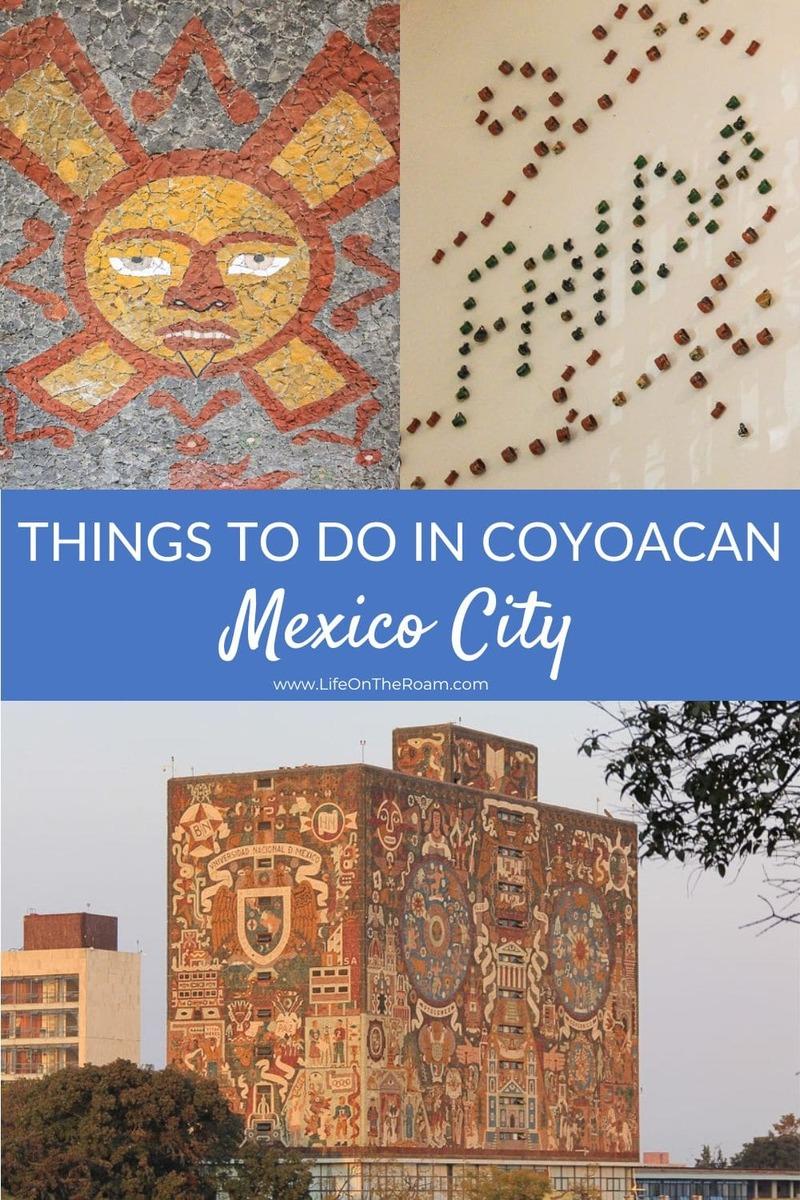
Table of Contents
Visit Casa Azul: Where Frida Kahlo Lived
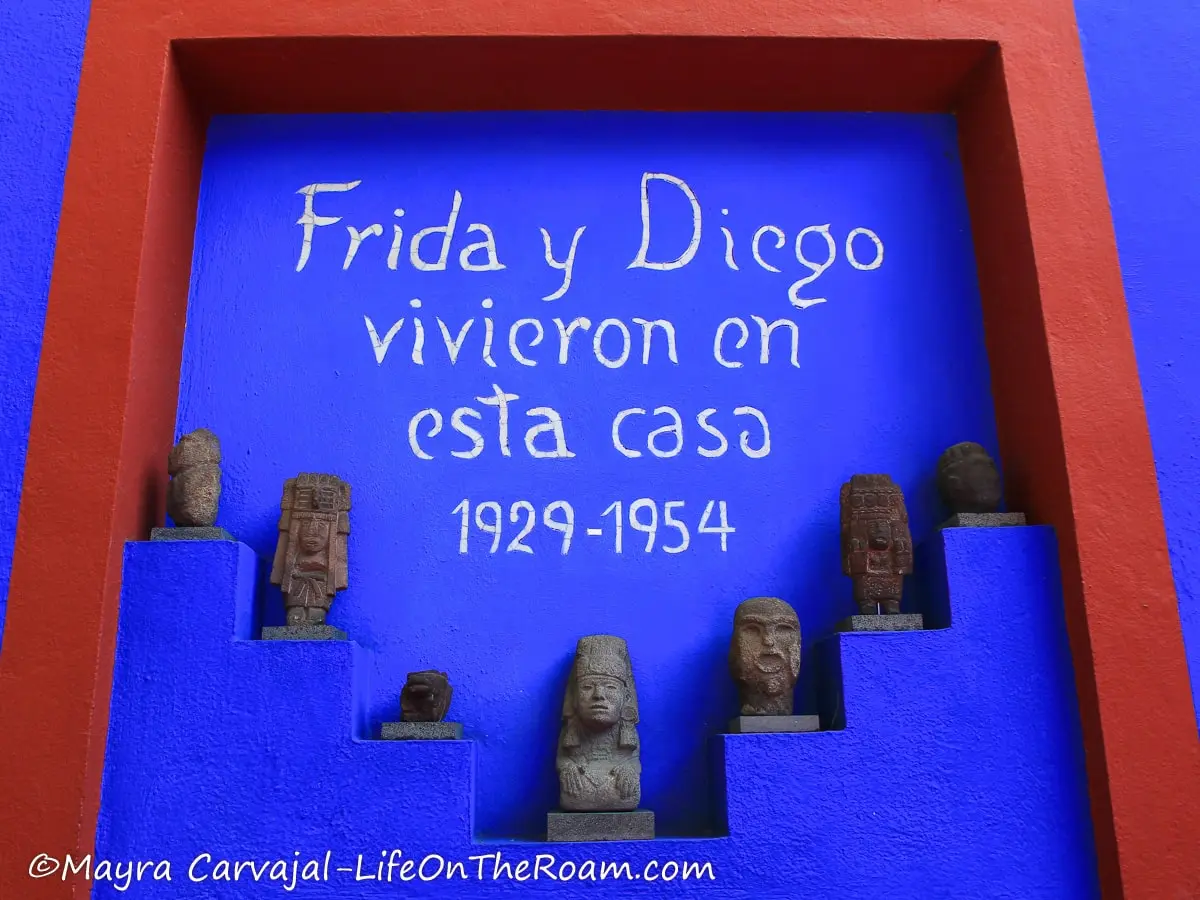
No matter where you’re from or what country you’re visiting, you’ve seen an image of Frida Kahlo printed on a tote bag, a t-shirt, or any common apparel in souvenir shops. It comes as no surprise since the artist, born in Coyoacan in 1907, is the most celebrated LatinAmerican female painter ever.
The walls of Casa Azul (meaning Blue House) welcomed Frida into this world, saw her painting many of her masterpieces, and heard her last breath.
The same electric blue, burnt red, and emerald green walls that saw many big names in the art world such as André Breton, David Alfaro Siqueiros, and Georgia O’Keefe.
Casa Azul offers an insight into Frida’s life, her interests, her struggles, and the objects that inspired her.
After leaving the nest she moved back in 1941 when her dad, photographer Guillermo Kahlo, passed away. She stayed here until her death in 1954.
Although you’ll see some of Frida’s original portraits and artwork, you won’t find a large collection of her oil paintings. Instead, you’ll find other artwork rarely seen: pencil sketches, watercolours, engravings, puppets, photographs, and self-inspired dolls she made in different styles.
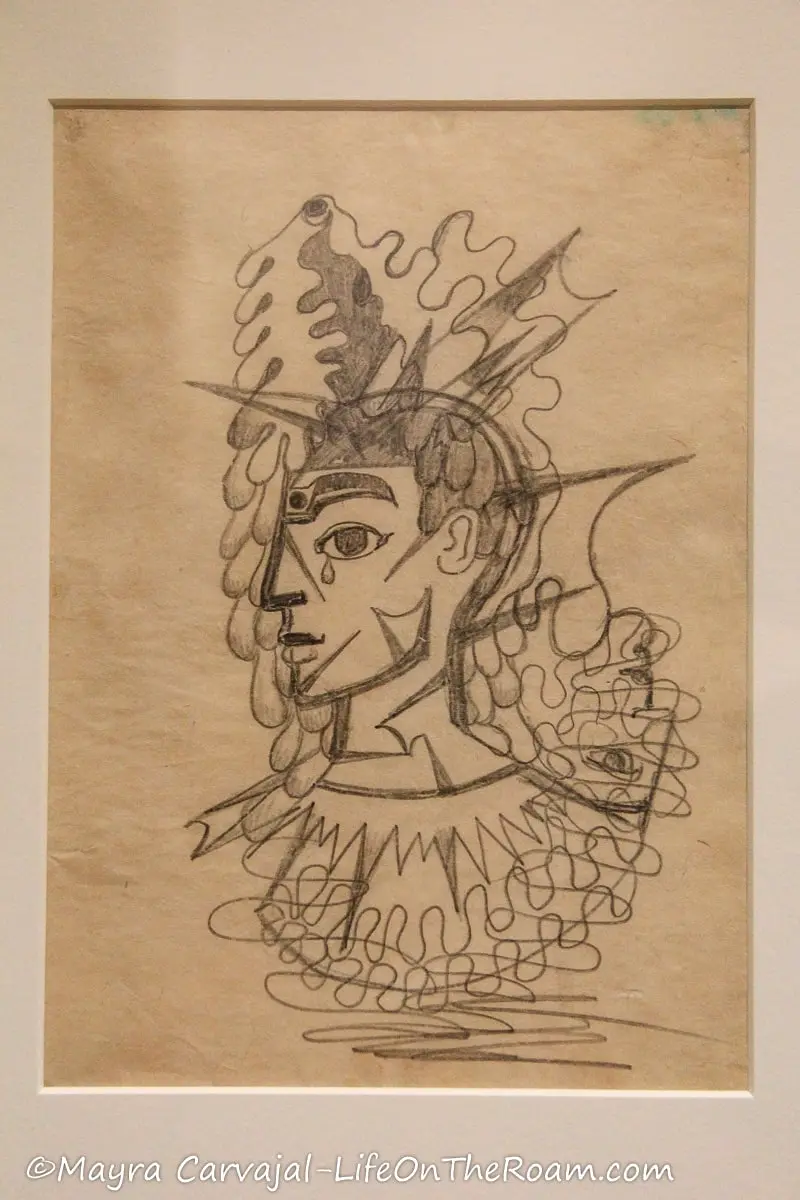
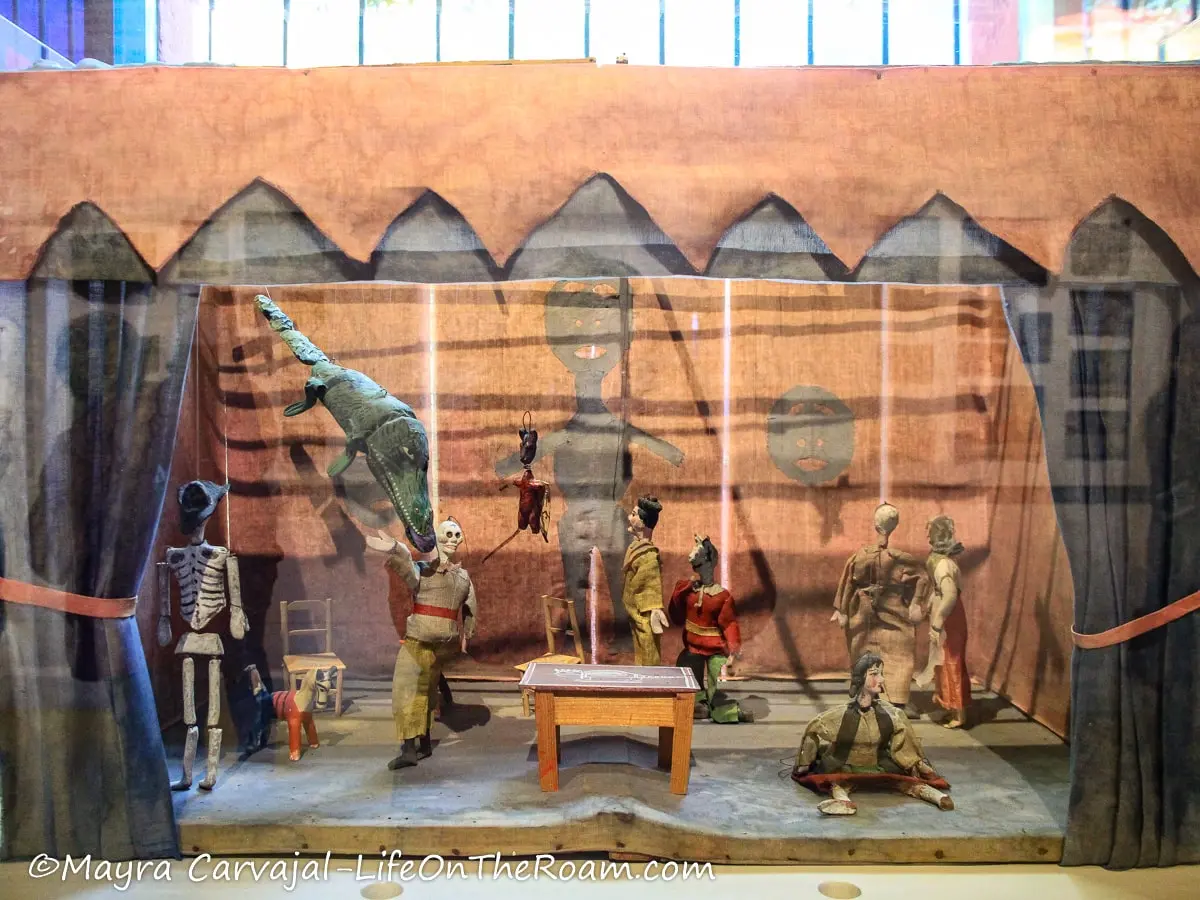
One of my favourite rooms in the Frida Kahlo museum was her studio, which looks exactly as she left it. Here are her wheelchair sitting in front of an easel gifted by Rockefeller, the mirror she used to paint the self-portraits you see in many museums today, and her magic wand: a stack of pastels, inks, brushes, mortars, and oil paints.
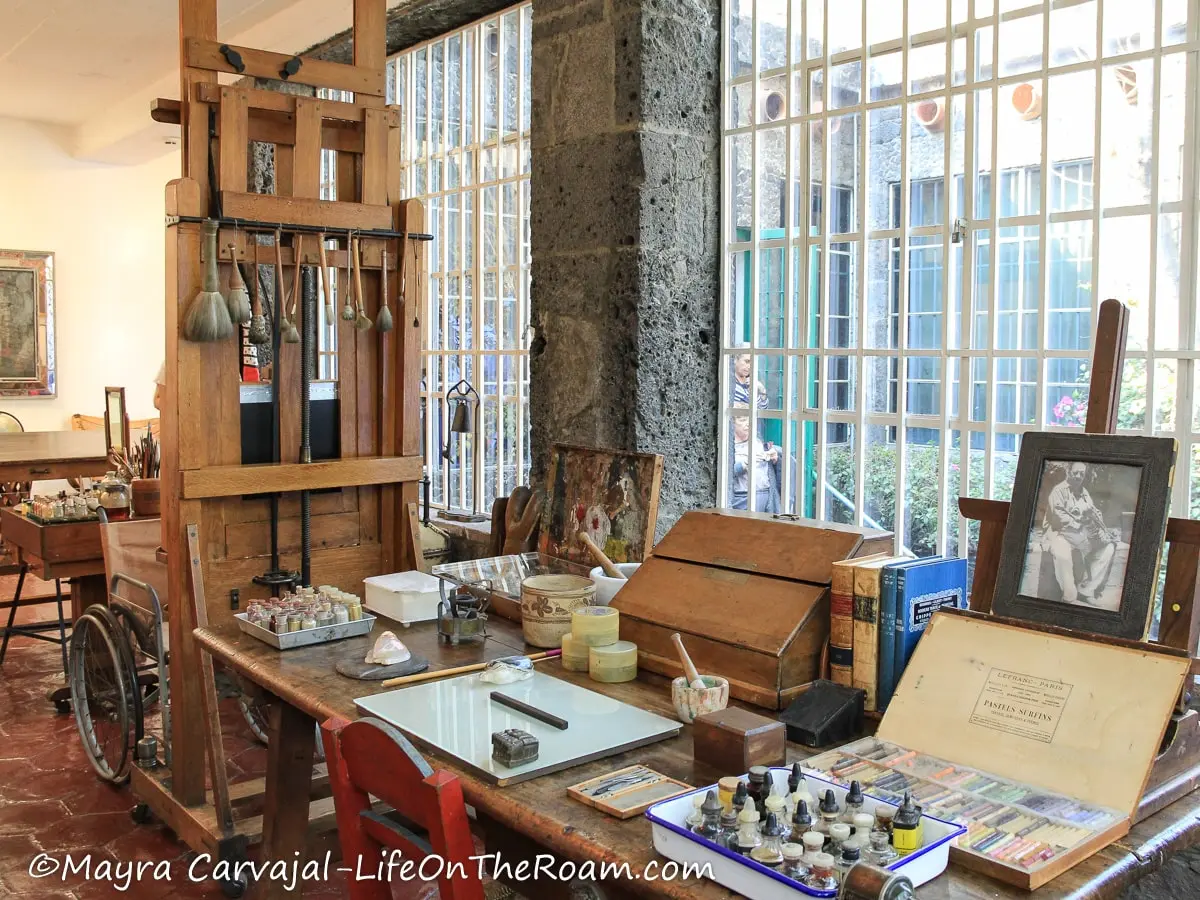
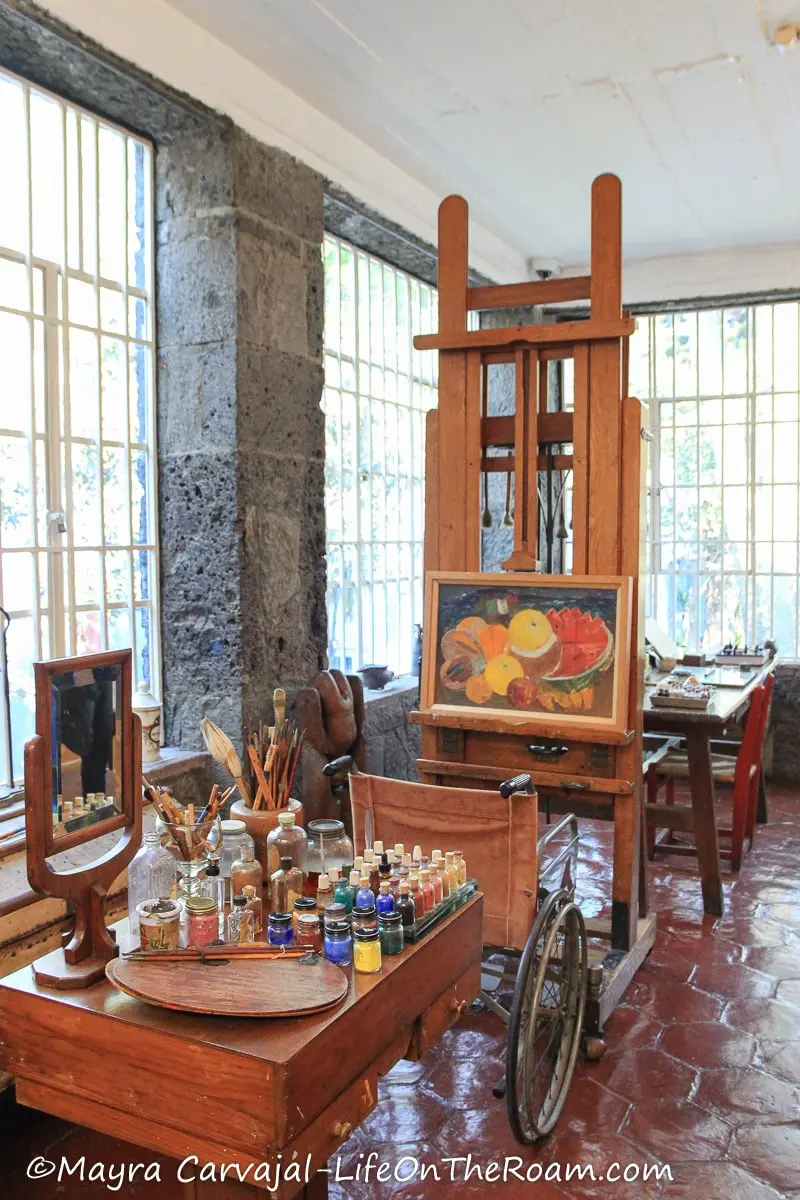
Another beautiful space is the lovely and colourful traditional Mexican kitchen of the early 20th century, decorated with a vast collection of popular art.
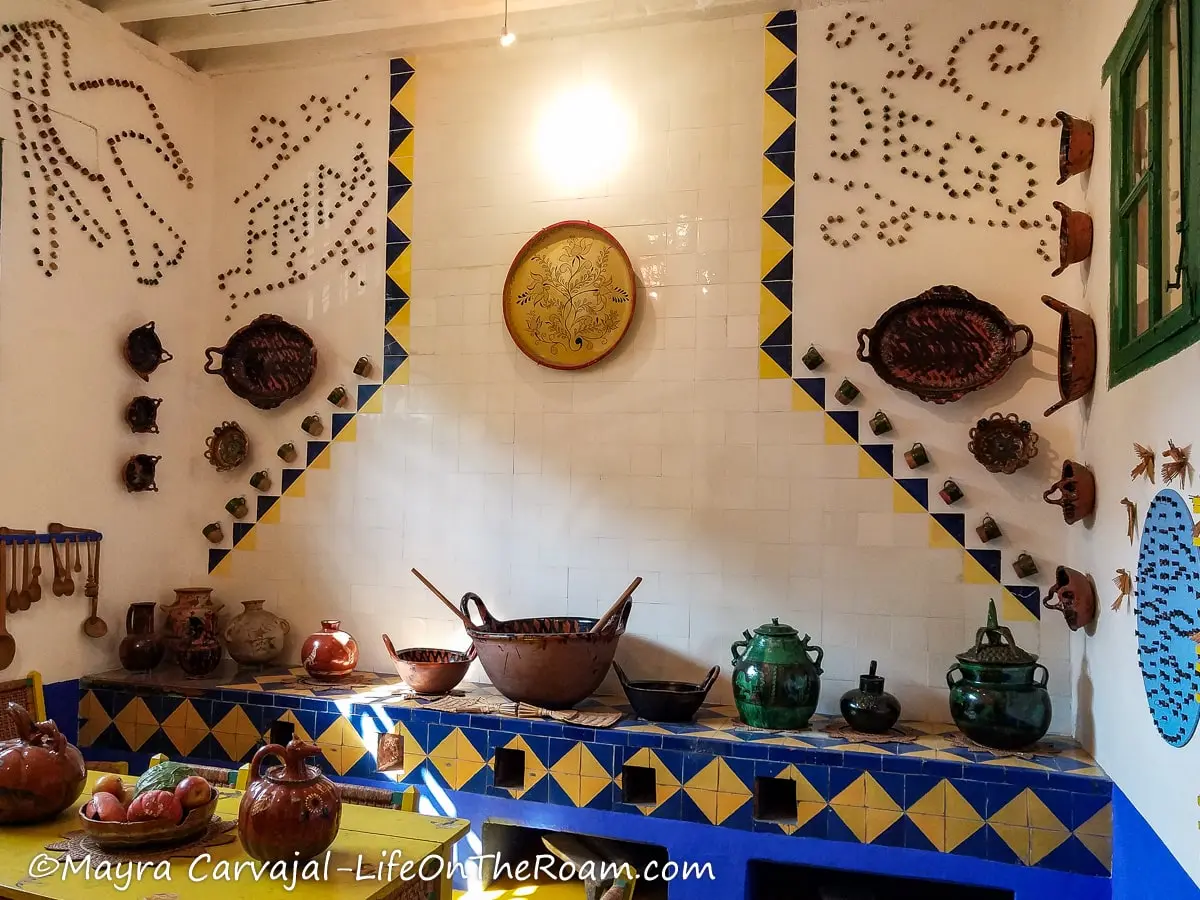
Casa Azul is filled with many interesting tokens, such as an extract of her diary describing the emotion behind her colour palette and gifts from artist friends.
For example, in the night time bedroom you’ll see a collection of butterflies that was a gift from Isamu Noguchi (who allegedly had an affair with Frida) and a lithograph from her friend Marcel Duchamp. Nearby you’ll see a toad-resembling pre-Hispanic urn with her ashes. In the daytime bedroom you can see her tiny bed with the mirror installed above after her accident. Her death mask rests below her pillow, with her medicines on the night table.
You can also see Diego Rivera’s bedroom: the same that Leon Trotsky (another affair on her list) occupied during his exile, as well as the chimney he designed, and some of his artwork.

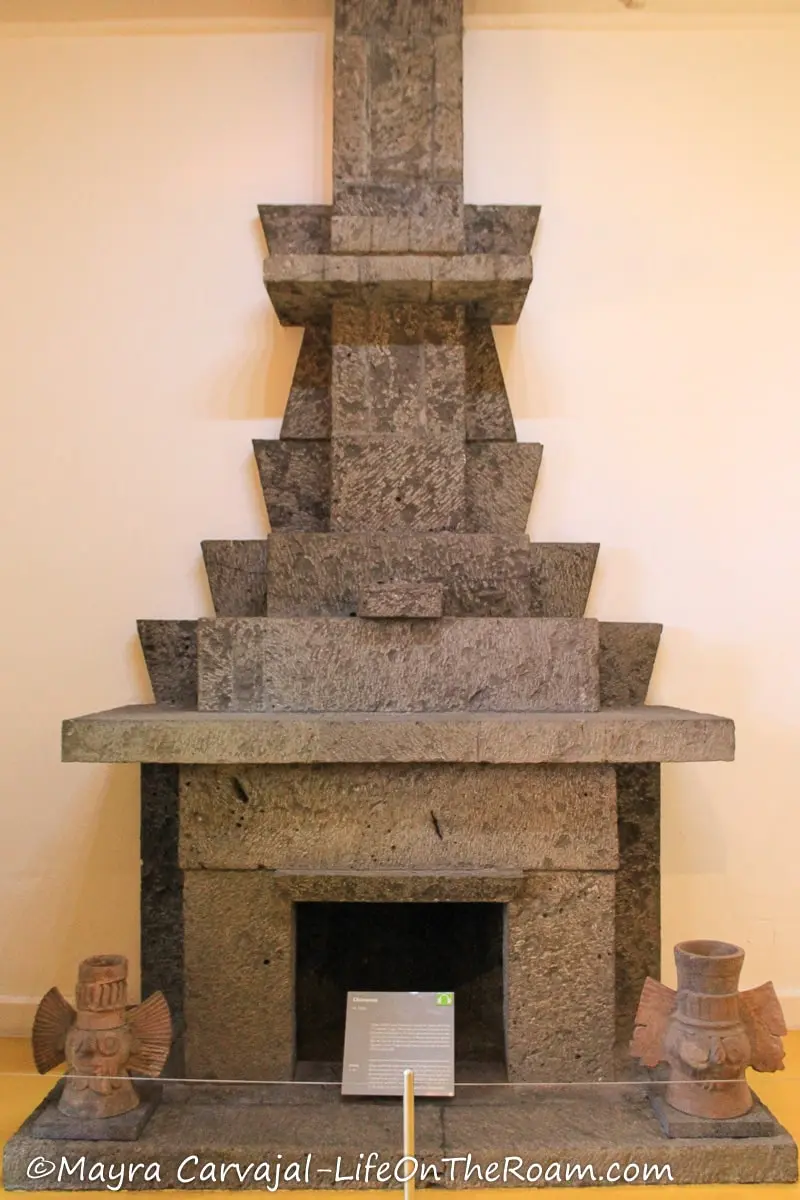
The visit ends in the beautiful inner patio full of mature trees, ancient pottery, tiled pools and fountains, and even its own mini pyramid resembling a pre-Hispanic altar.
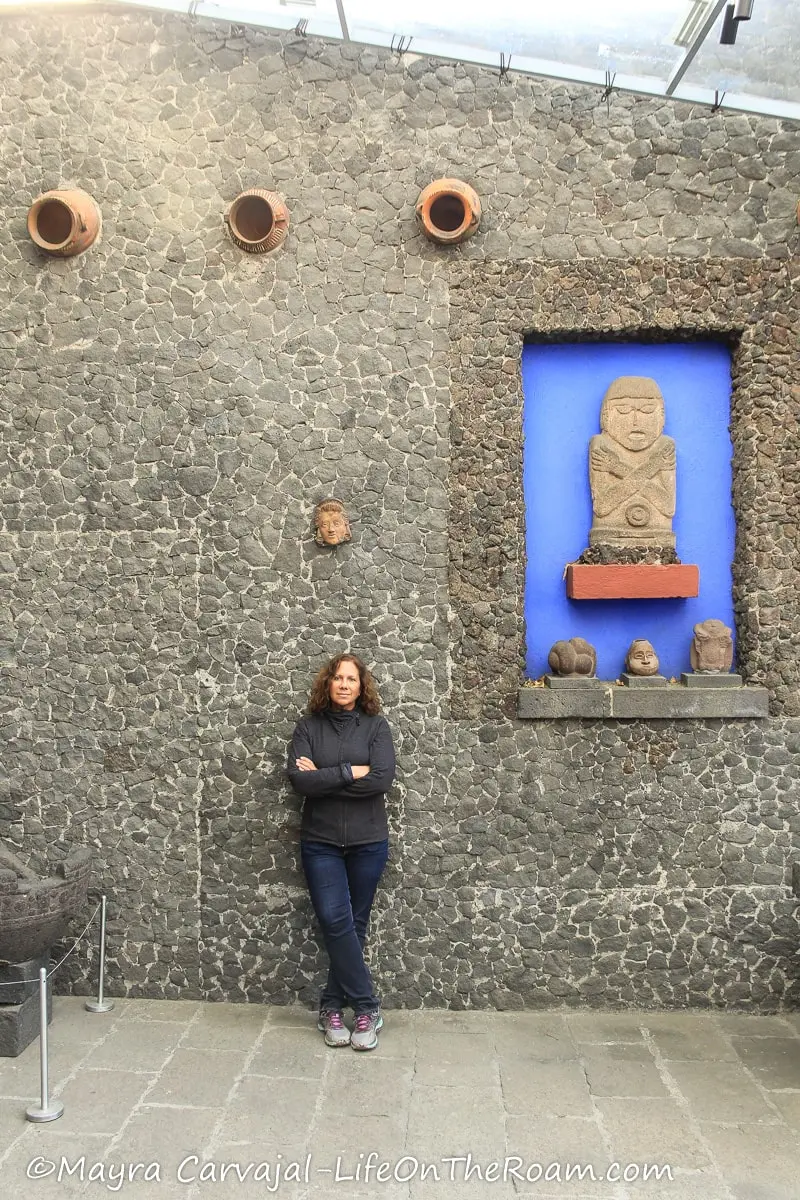
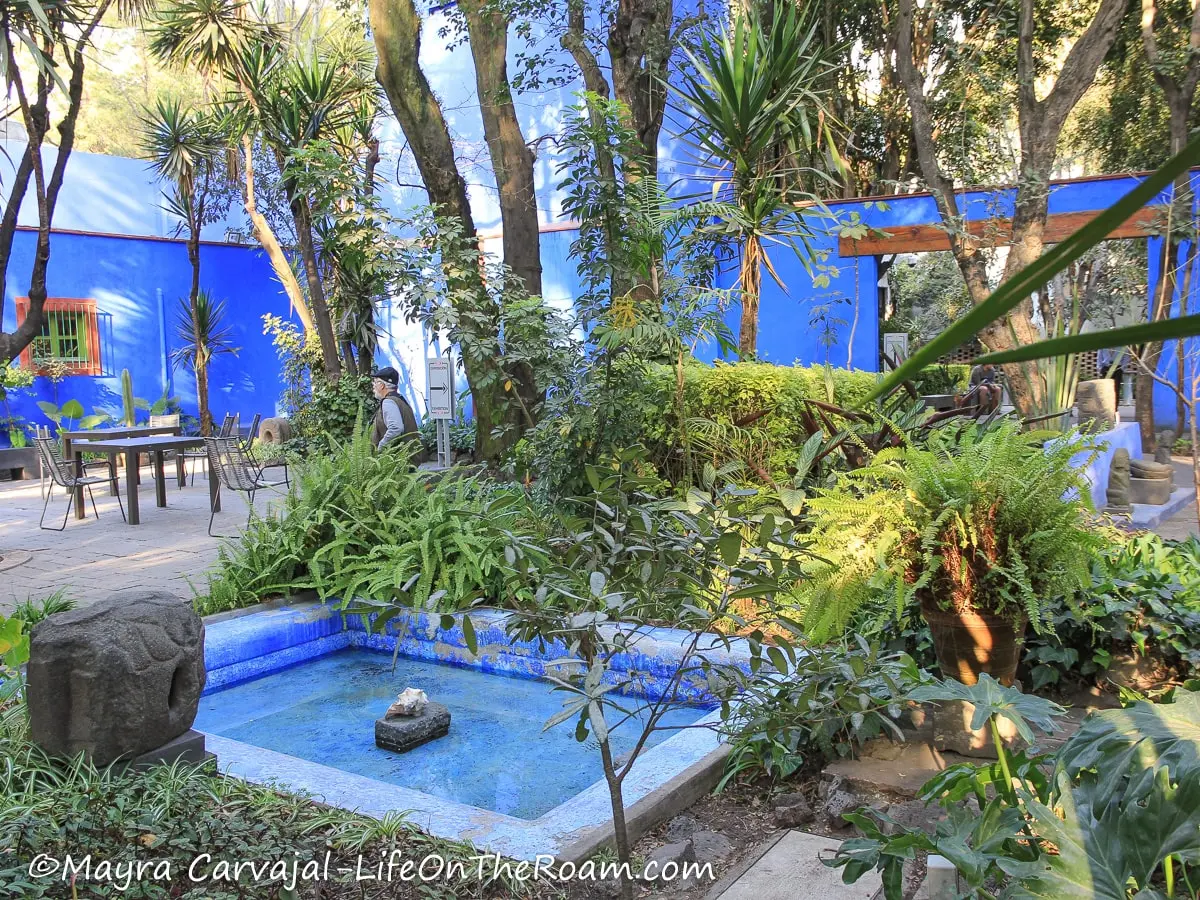
The museum has a café and a souvenir store.
Note: you must purchase tickets in advance online, they’re not sold at the door. Do it at least two weeks ahead (or more) as this is one of Mexico’s most popular museums.
Frida Kahlo Museum
Londres 247, Colonia del Carmen; Open Tue. to Sun.: 10AM-6PM (Wed. open from 11AM); General admission: MXN$320. Ticket includes entrance to the Anahuacalli Museum.
Step Inside the Church of San Juan Bautista (St John the Baptist)
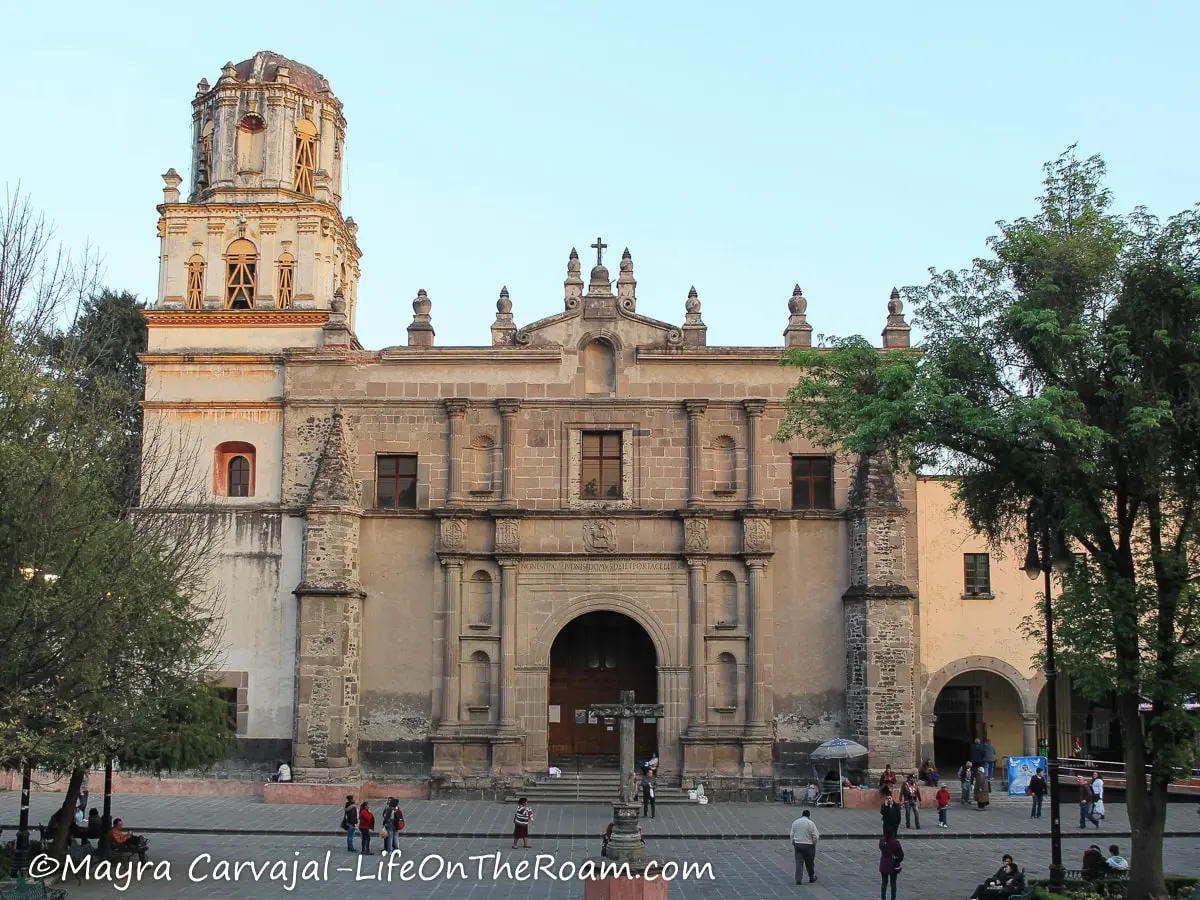
The San Juan Bautista Church and ex-Convent, located next to Plaza Hidalgo, is the main church in Coyoacan with a rather simple exterior that hides a wonderful interior.
The Baroque-style church dates back to the 16th-century (one of Mexico’s oldest), has painted biblical scenes framed by intricate mouldings on the wide barrel vault ceiling, and a painting of Virgin Mary adorning the semi-dome of the apse.
On the sides you’ll also see many ornate altars with detailed woodwork covered in gold.
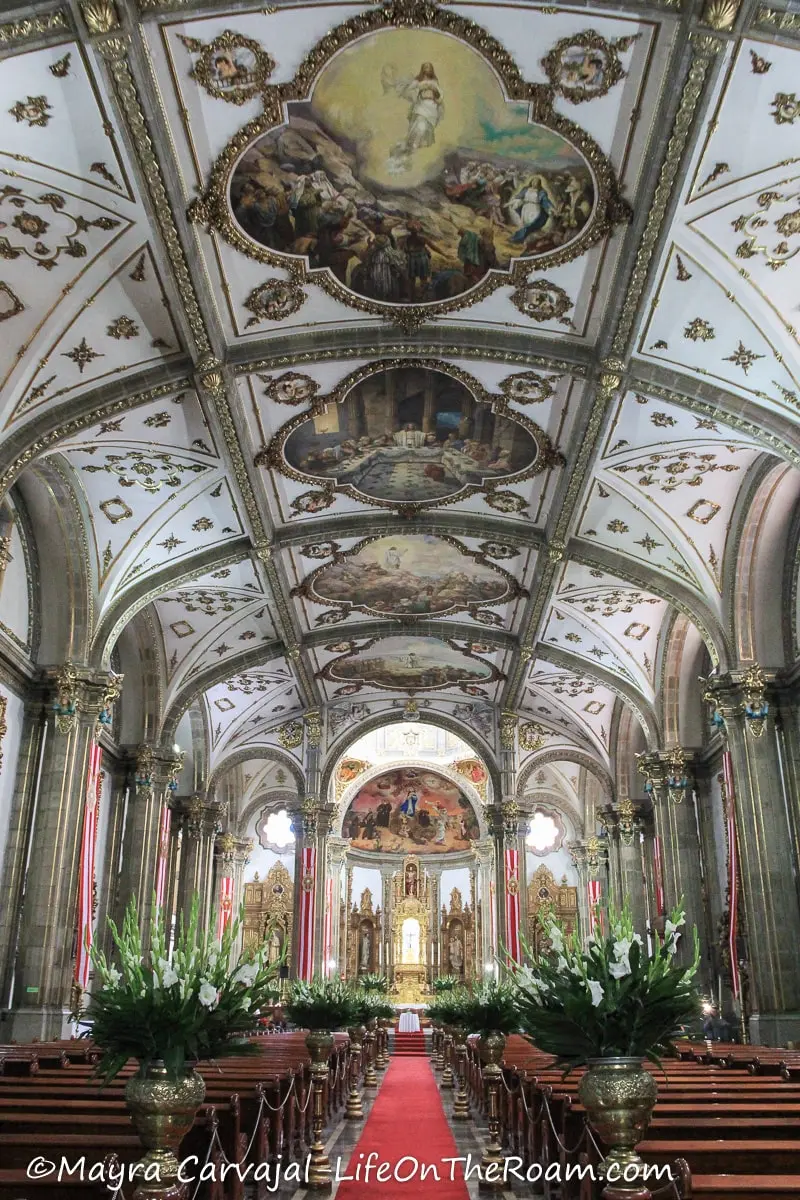
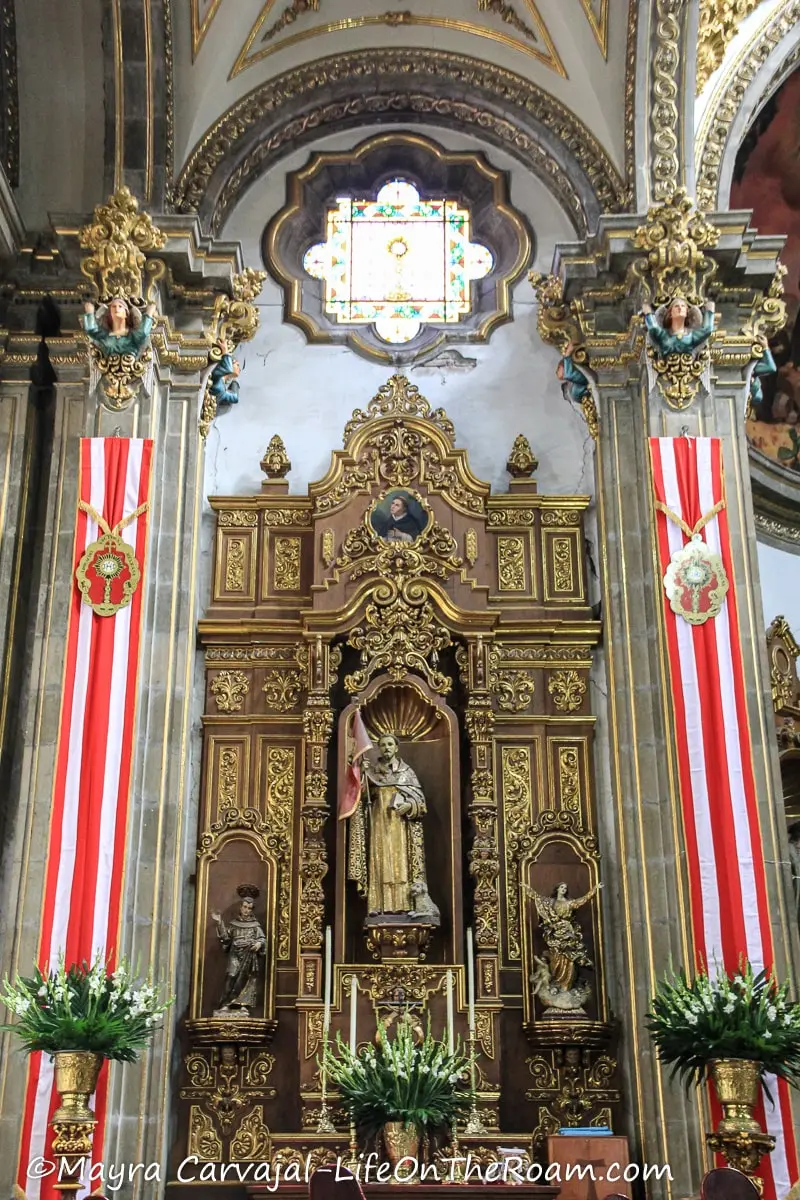
Relax at Plaza Hidalgo and Jardin Centenario in Coyocan’s Centre
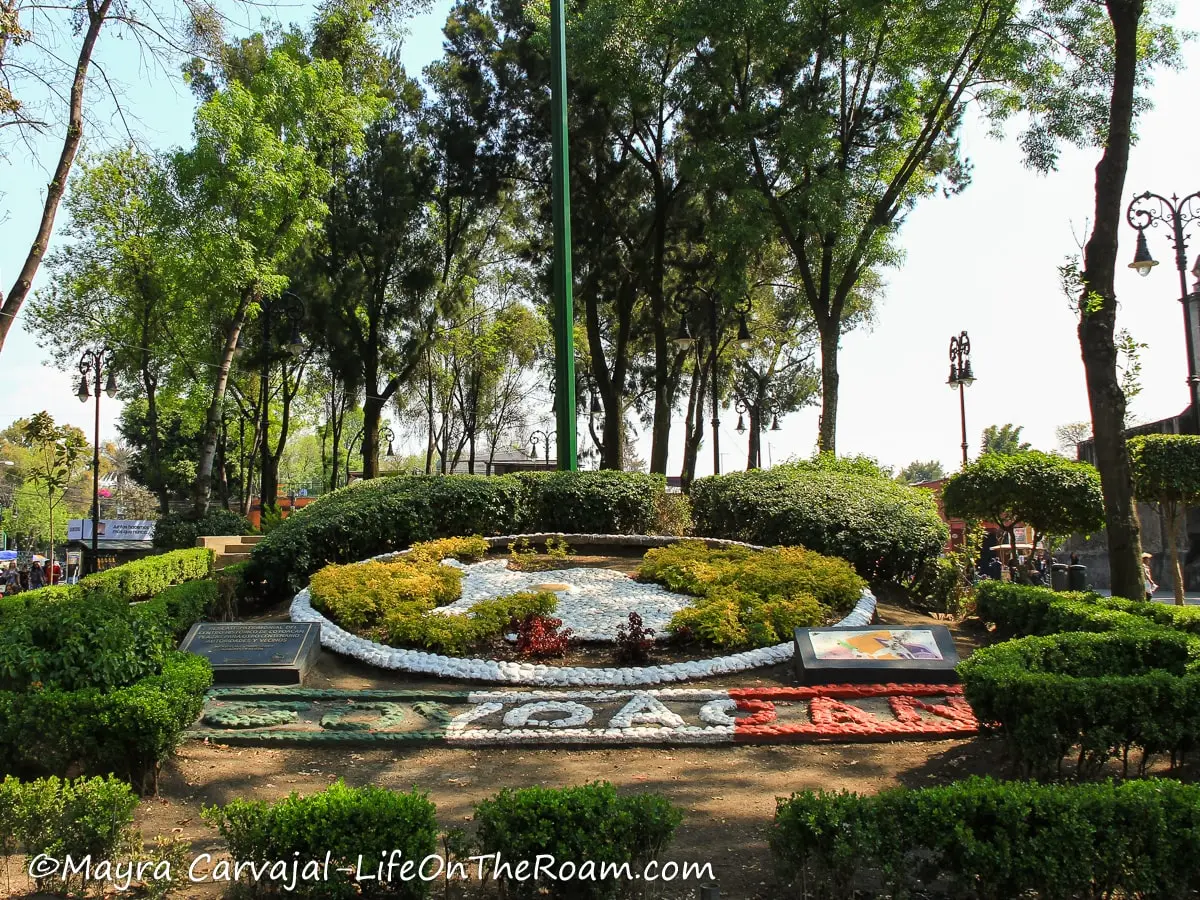
These two big squares, located diagonally across each other, are the liveliest places in Coyoacan where people of all ages gather, street performers entertain, and celebrations happen.
Jardín Centenario (Centennial Park) is famous for its iconic attraction: La Fuente de Los Coyotes (the Coyote Fountain). A bronze statue with two coyotes alludes to the Nahuatl word Coyoacan (pronounced co-joah-KAHN), meaning ”Place of the Coyotes”. In the indigenous worldview the coyote signifies wisdom, strength, and mischievousness.
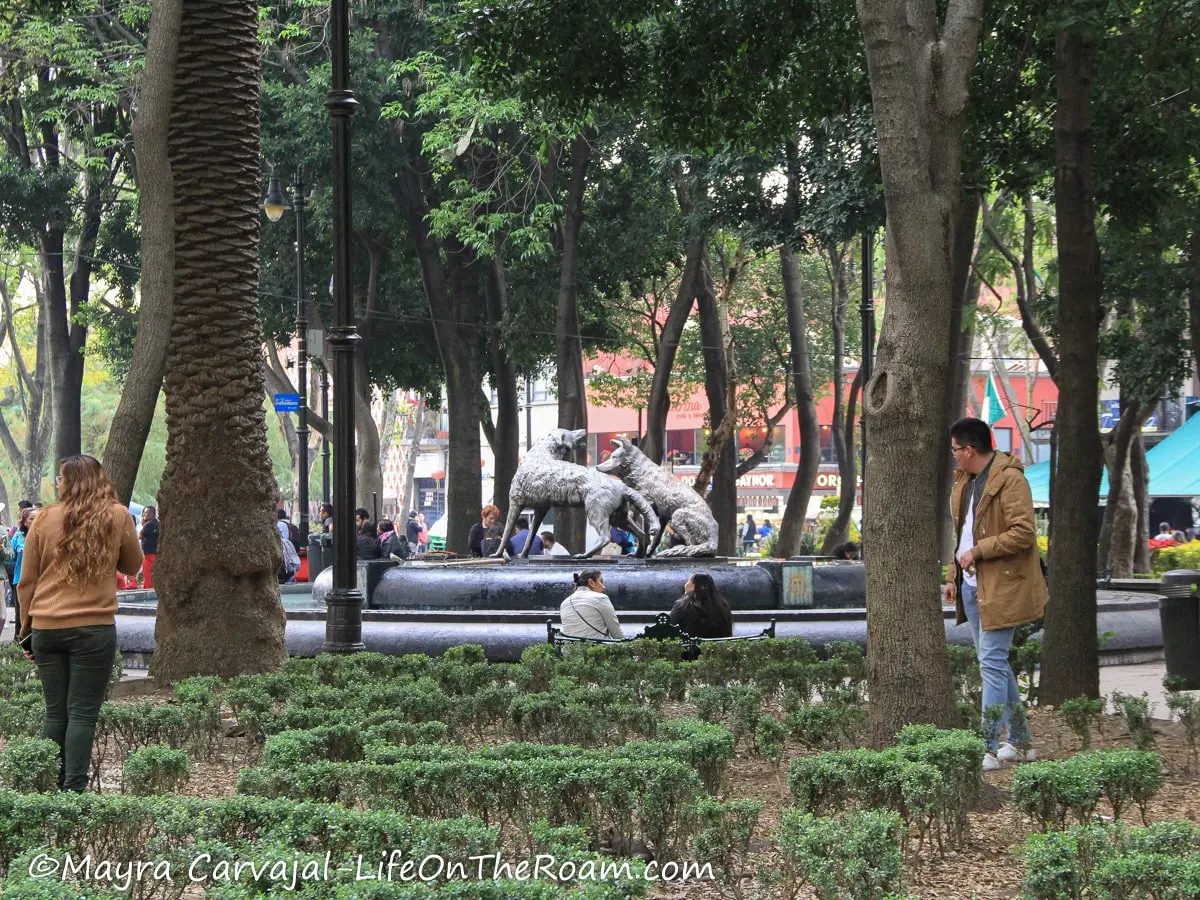
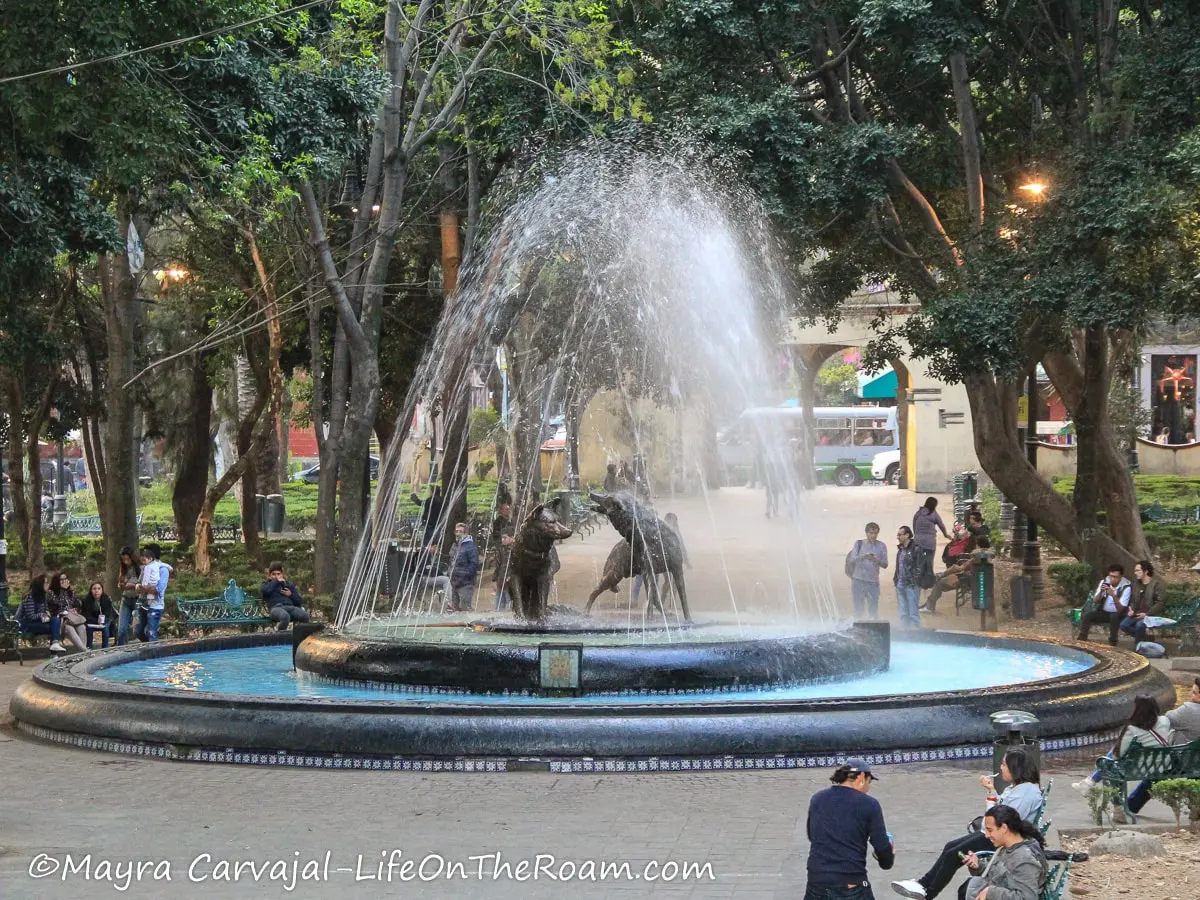
The fountain is surrounded by benches under the shade of tall trees and streets with many cafés.
Jardín Hidalgo (Plaza Hidalgo), next door, is another popular space for cultural events in Coyoacan, with gardens, the ubiquitous traditional kiosco (central gazebo), and a monument to independence hero Miguel Hidalgo.
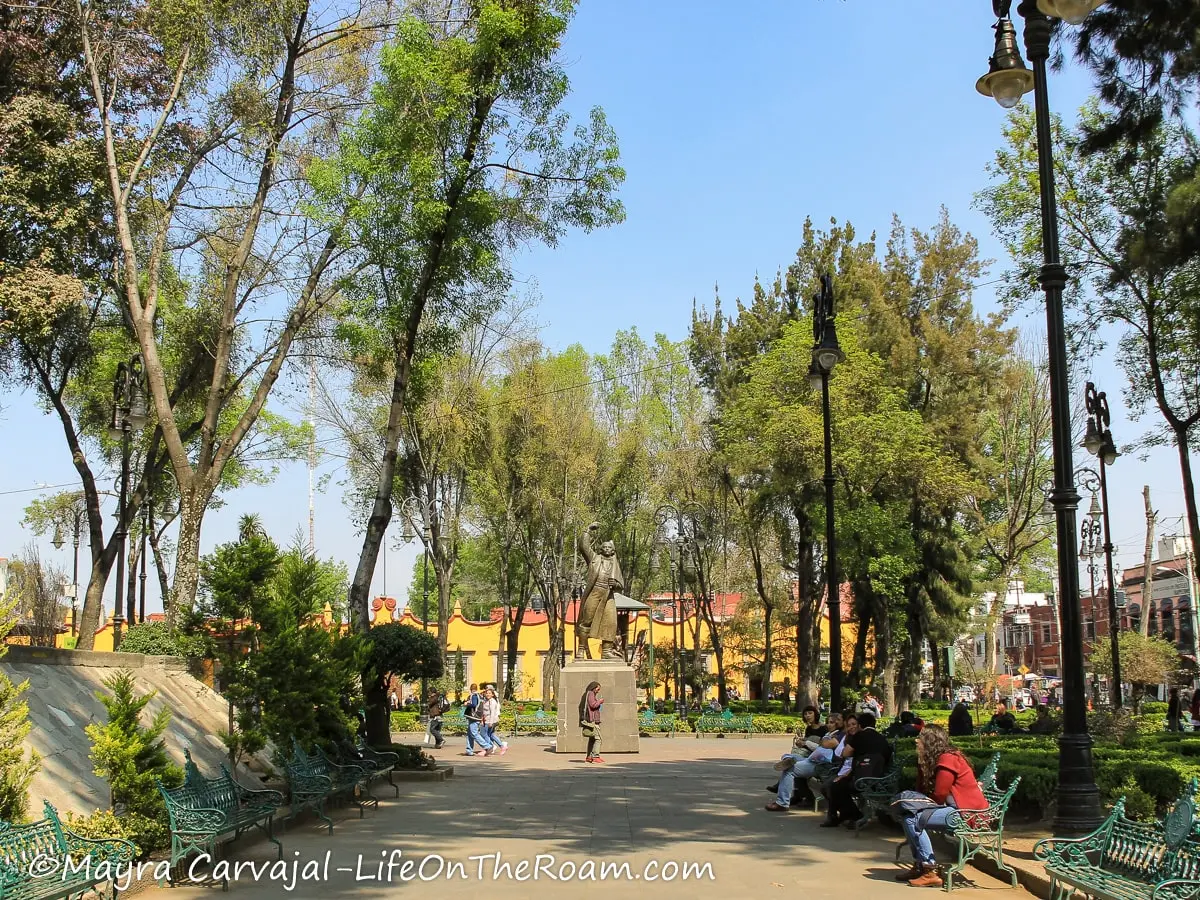
Hear about the secrets hidden in the corners of Coyoacán and its cobblestone streets with a guided tour that includes a guided visit to the Leon Trotsky Museum.
Book this tour, with a 5/5 rating based on more than 20 reviews.
Try Churros at Churrería General de La República
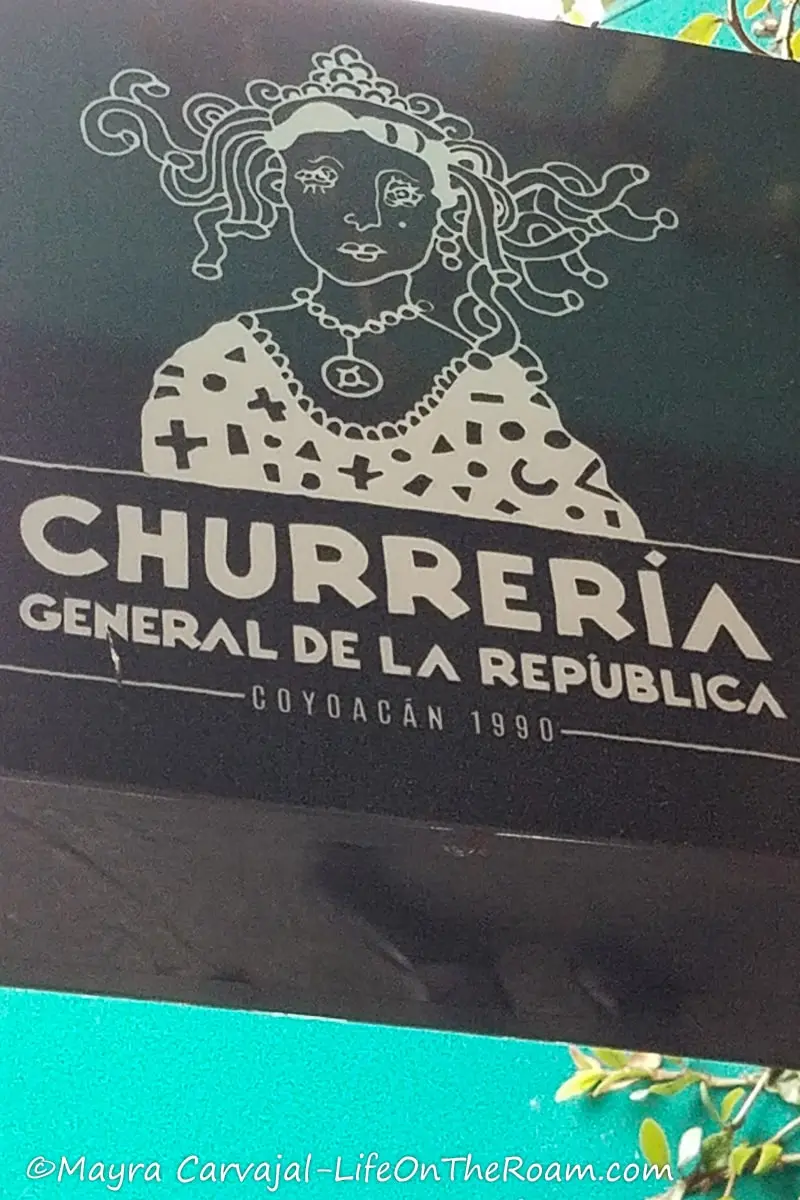
I love churros and the ones at Churrería General de La República didn’t disappoint.
Try the traditional churros covered with sugar (or sugar with cinnamon) or try the churros filled with chocolate, dulce de leche, cajeta (goat milk candy), or with fruit (mango, strawberry, figs, etc.). You’ll find them a few steps away from Jardín Centenario (close to the arches).
Try a New Ice Cream Flavour at Helados Siberia
This ice cream shop is conveniently located next to Jardín Centenario and it offers decent ice cream and sorbets, with a big variety of flavours. Why not try their Beso de Angel (Angel’s Kiss), a combination of mammee, pecans and strawberry, or their cheese ice cream.
Browse and Eat at the Coyoacan Market
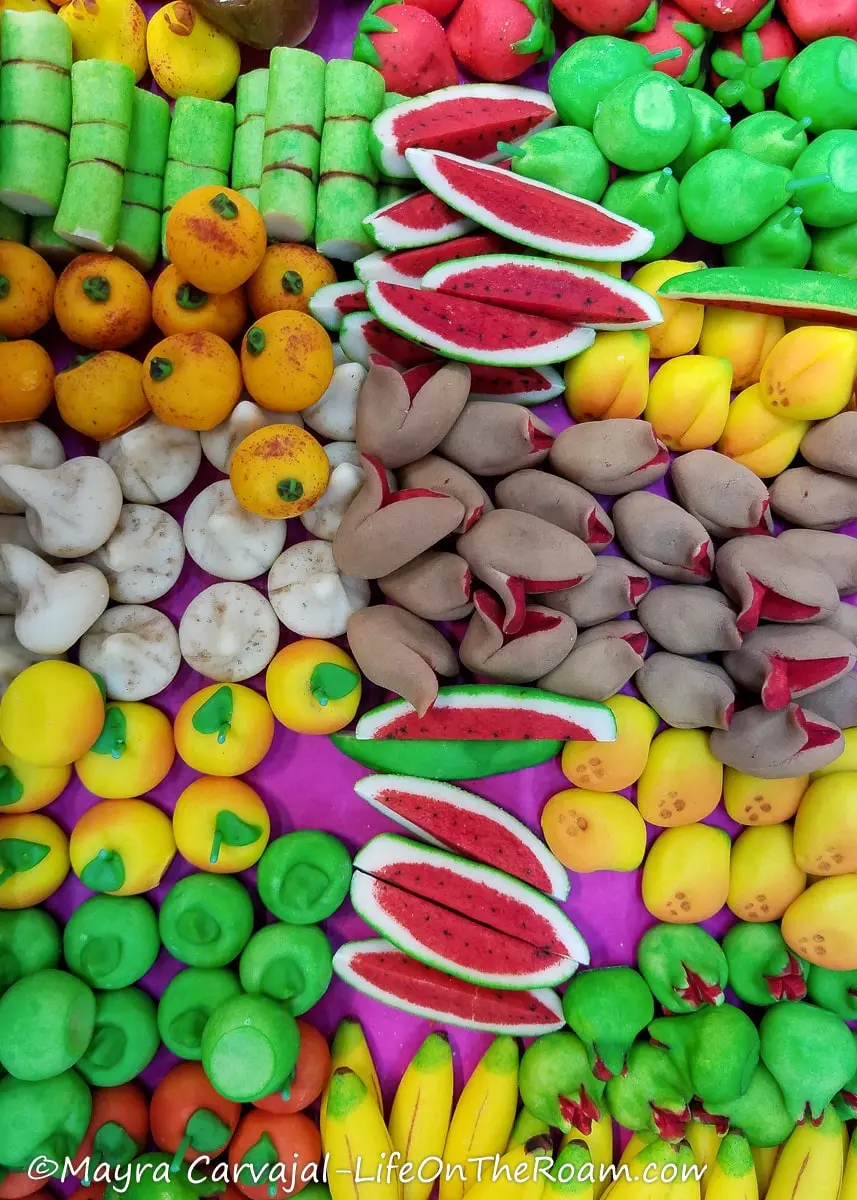
In addition to offering handicrafts, sweets, fresh fruits and veggies and other goods, the colourful Coyoacan Market is your best bet to find an ample selection of stalls serving authentic local food, at a wide range of prices.
Hop On the Turibús: Circuito Sur Coyoacan
For an overview of Coyoacan take the Turibus, a hop-on-hop-off tour bus that includes an audio guide and that stops at a few of the most popular spots in the area. This is a good alternative if you only have a few hours, don’t want to walk much, or if you don’t want to deal with public transit (although you may have to deal with traffic, especially in the afternoon).
The Coyoacan route, which takes about two hours to complete from the starting point at Cibeles Fountain in Roma Norte, stops at the Frida Kahlo museum, at Jardín Centenario in the Historic Center, and at the Coyoacan Market before heading back to Roma Norte, where you can buy your ticket. It’s valid for the entire day and you can connect to other circuits to explore other parts of the city.
Turibus.com.mx; Cost: MXN$150.
Take a Walk in Viveros de Coyoacan Park
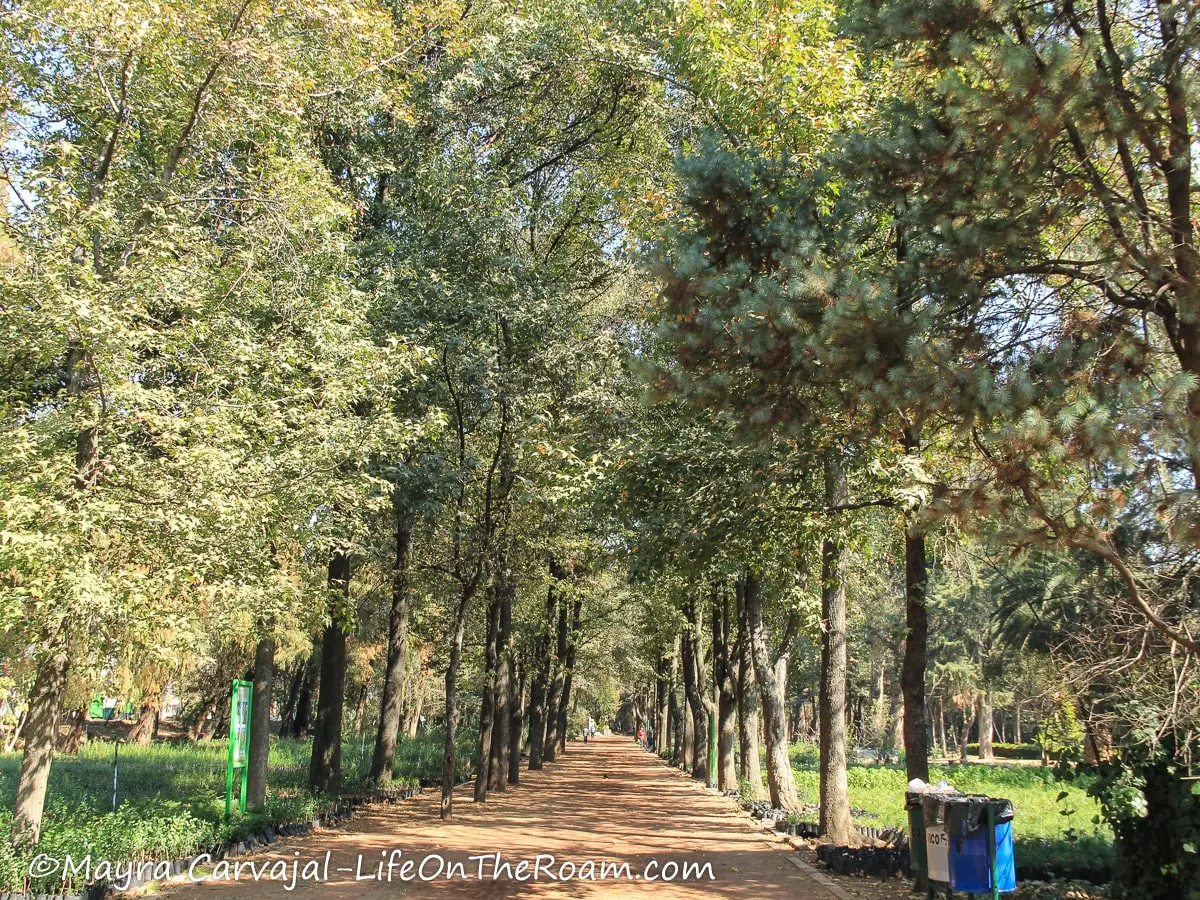
This urban park started as a tree nursery in 1907 and over the years expanded from 2.5 acres to 96 acres (38.9 hectares). The arboretum has several pathways for walking or running and still functions as a nursery that provides trees to the city.
It’s a great place to relax as you walk under the shade of different species of mature trees while checking out the sculptures flanking the paths.
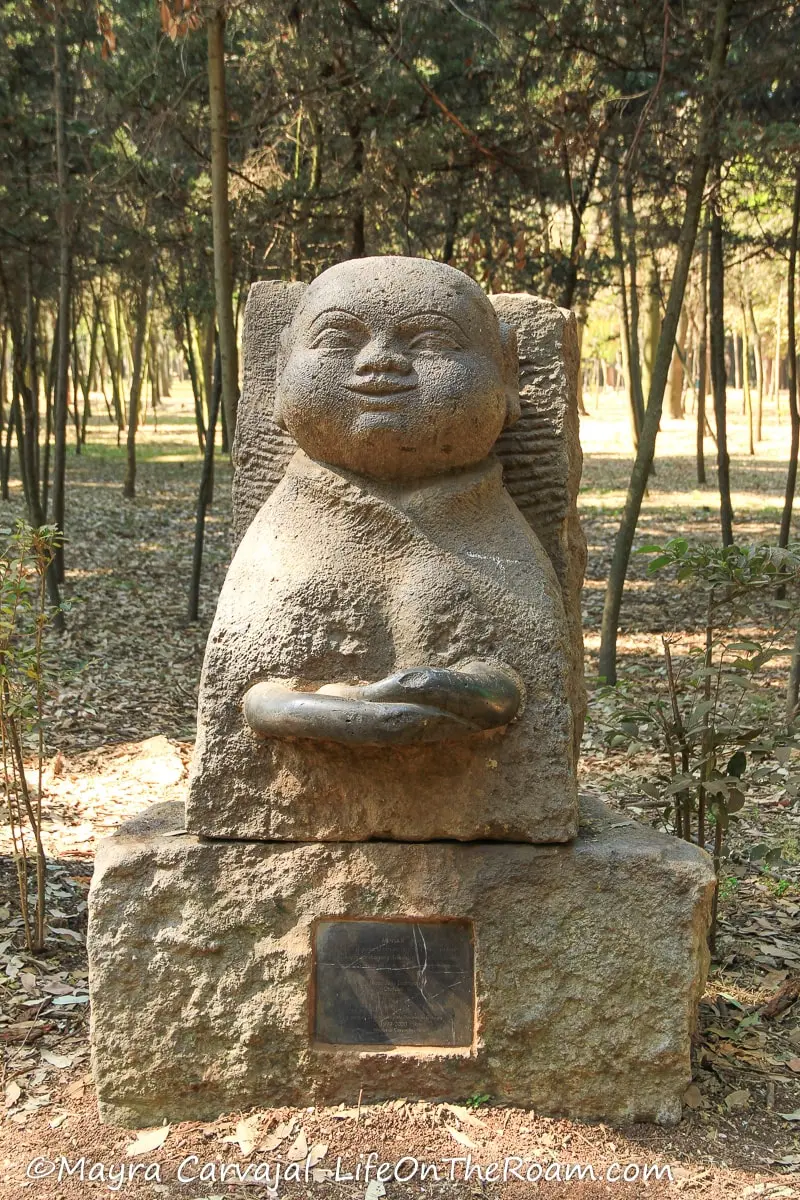
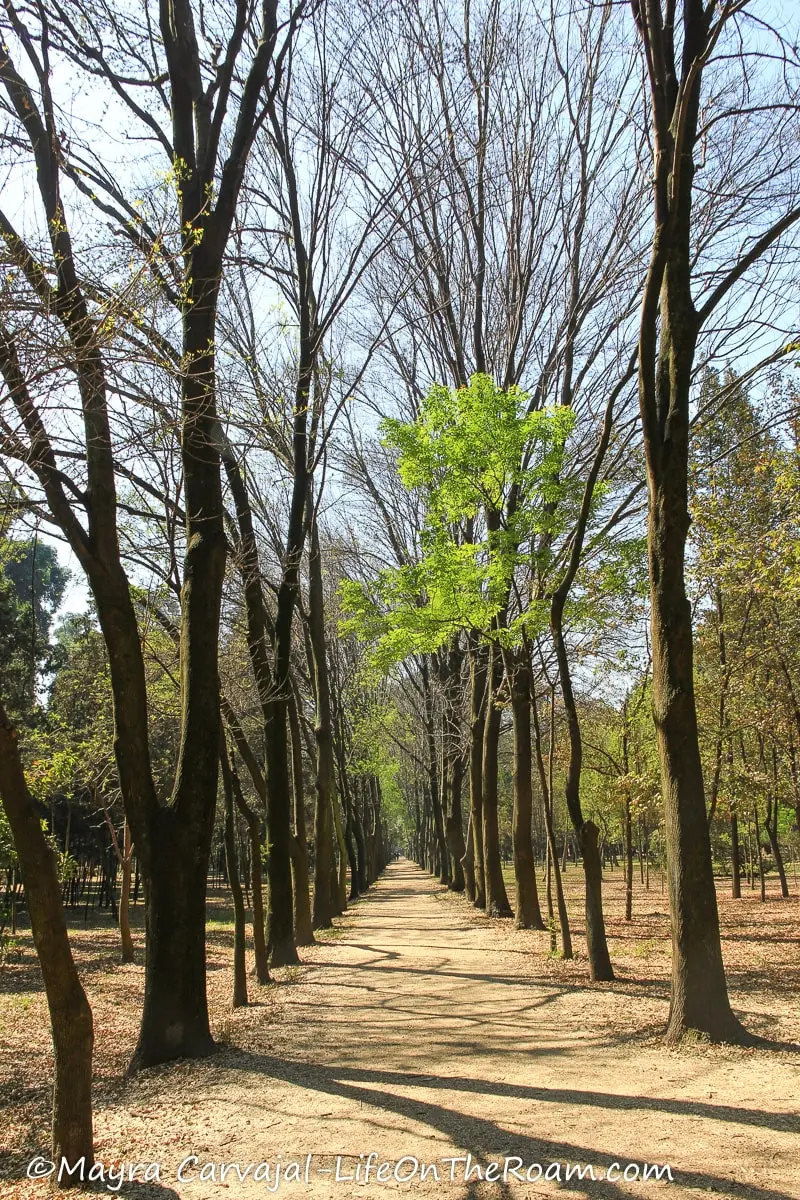
Closest subway station: Viveros/Derechos Humanos (Line 3 (Olive Green)); Open everyday: 6AM-6PM
See Diego Rivera’s Archaeological Collection at the Anahuacalli Museum
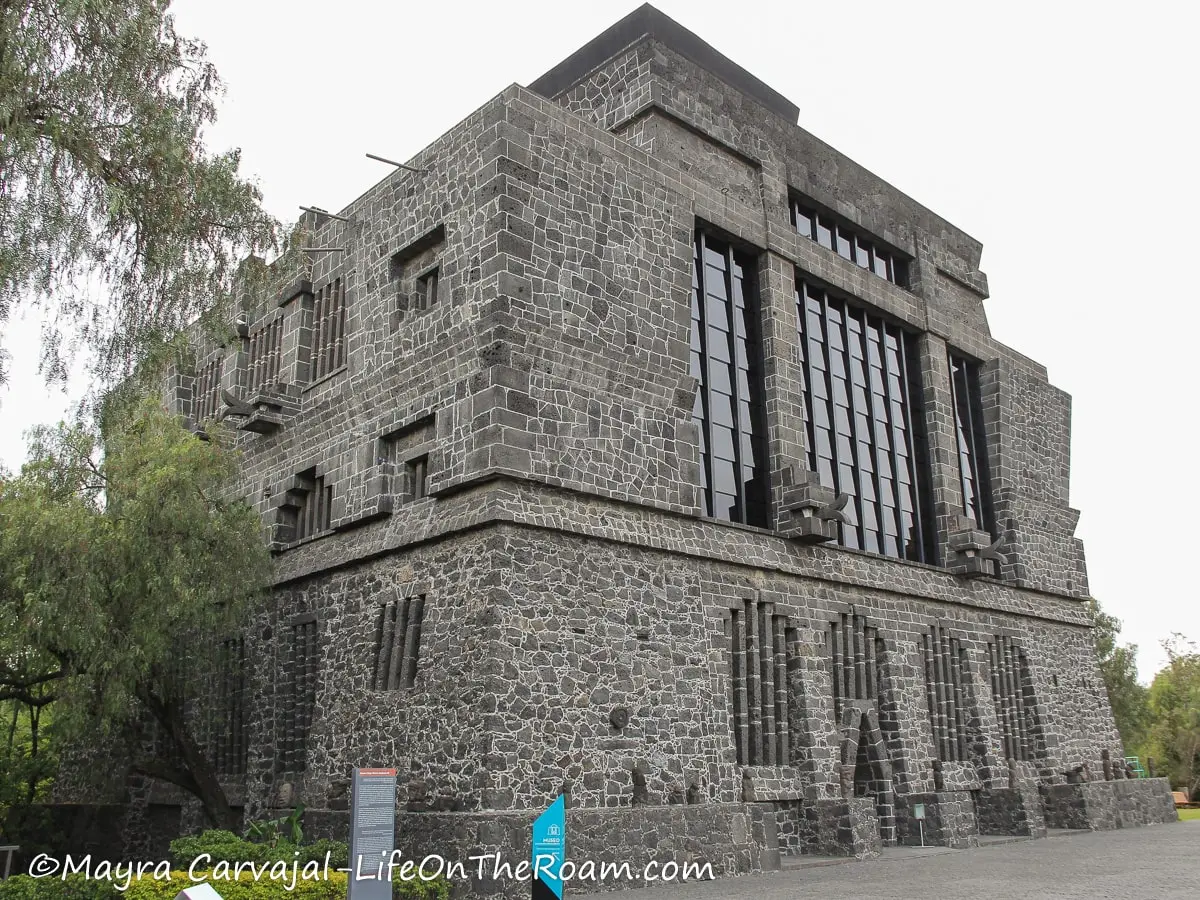
One-of-a-kind, eerie, and fabulous.
Anahuacalli, meaning “House surrounded by water”, is the museum and cultural centre designed by Diego Rivera to showcase his vast collection of pre-Hispanic objects, one of Mexico’s largest. The on-site volcanic stone was the material of choice to build a structure with pre-Hispanic influence and an Art Deco flair, stuffed with magical labyrinth-type interiors.
For a successful incorporation of indigenous elements in the building and a seamless integration with its surroundings Diego Rivera received guidance -via mail- from no other than the great Frank Lloyd Wright.
Diego Rivera used the shape of a teocalli (a pre-Hispanic temple) to model the building and the Teotihuacan patios to conceive the esplanade as an open-air theatre.
The artist never saw the project completed as he passed away after overseeing the construction of the ground floor.
Besides a unique architecture and hundreds of artifacts grouped by their aesthetic value you’ll see mosaics that Diego designed to decorate the walls and ceilings of the rooms, arranged according to the indigenous worldview.
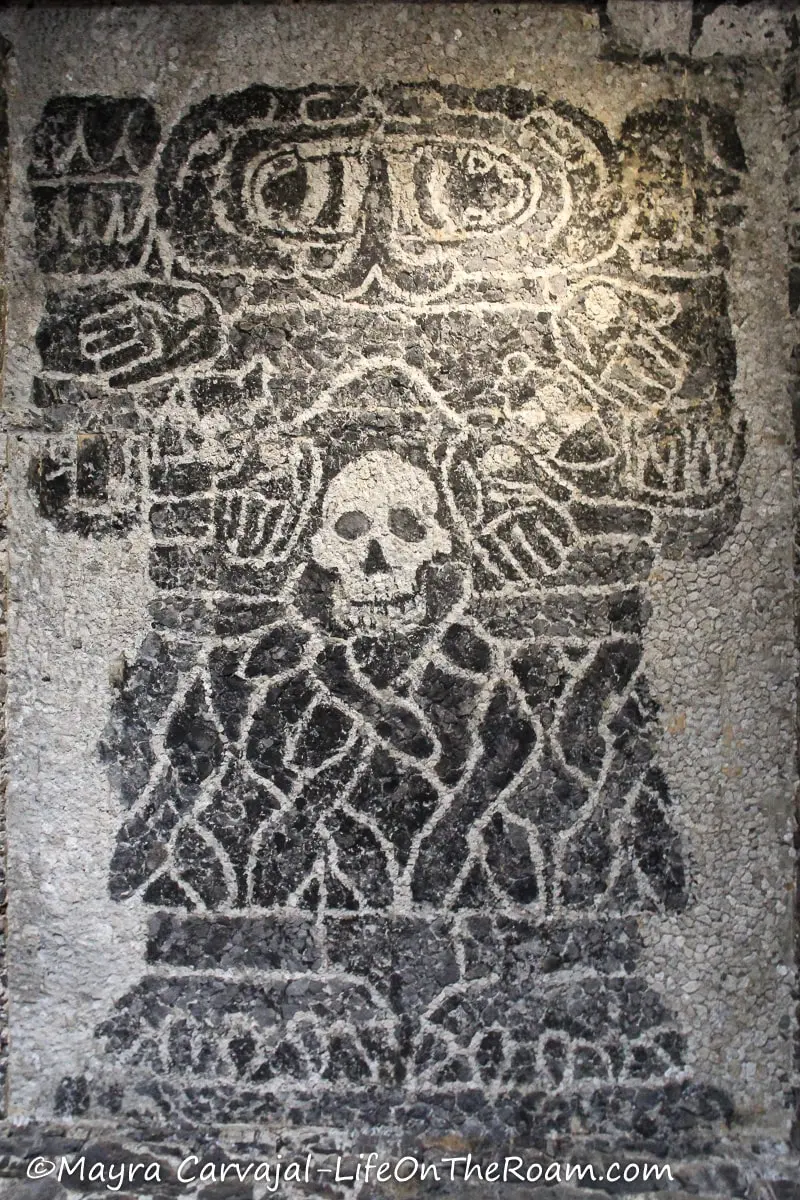
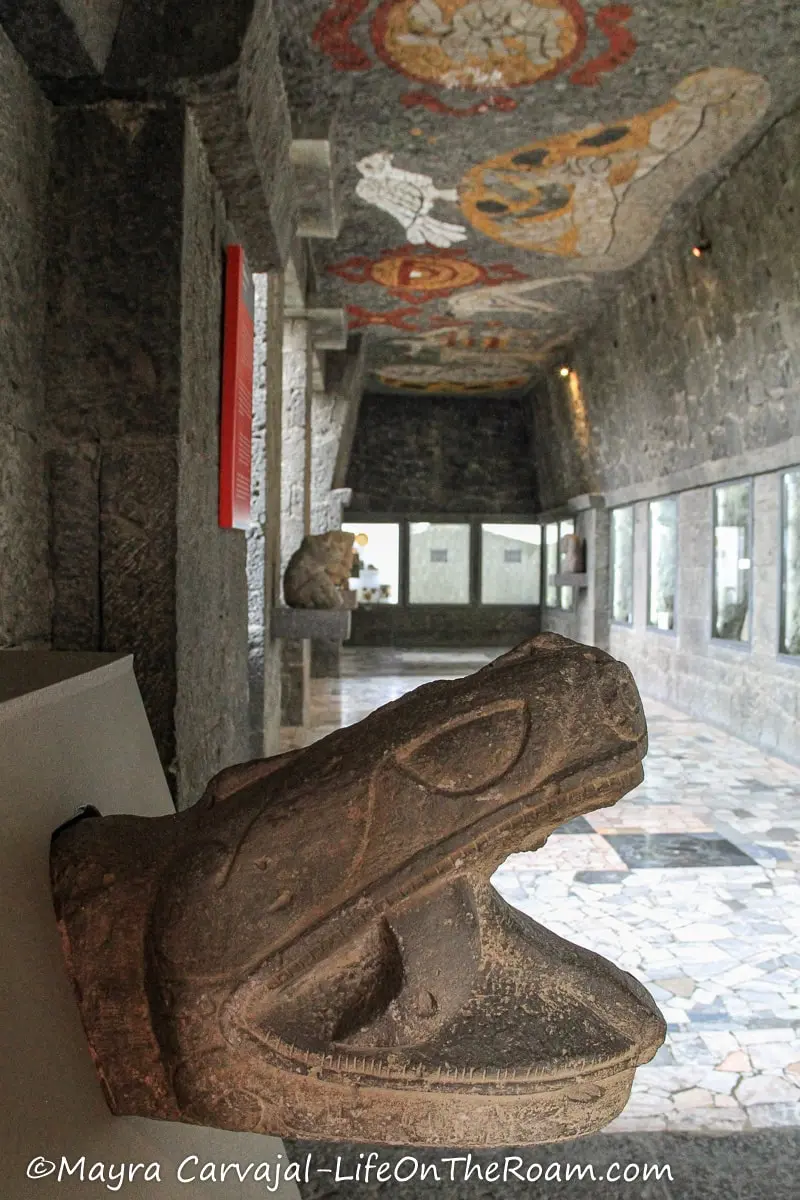
The displays look like altars (which makes sense as Anahuacalli was designed after a temple), perhaps conveying Rivera’s devotion for his collection.
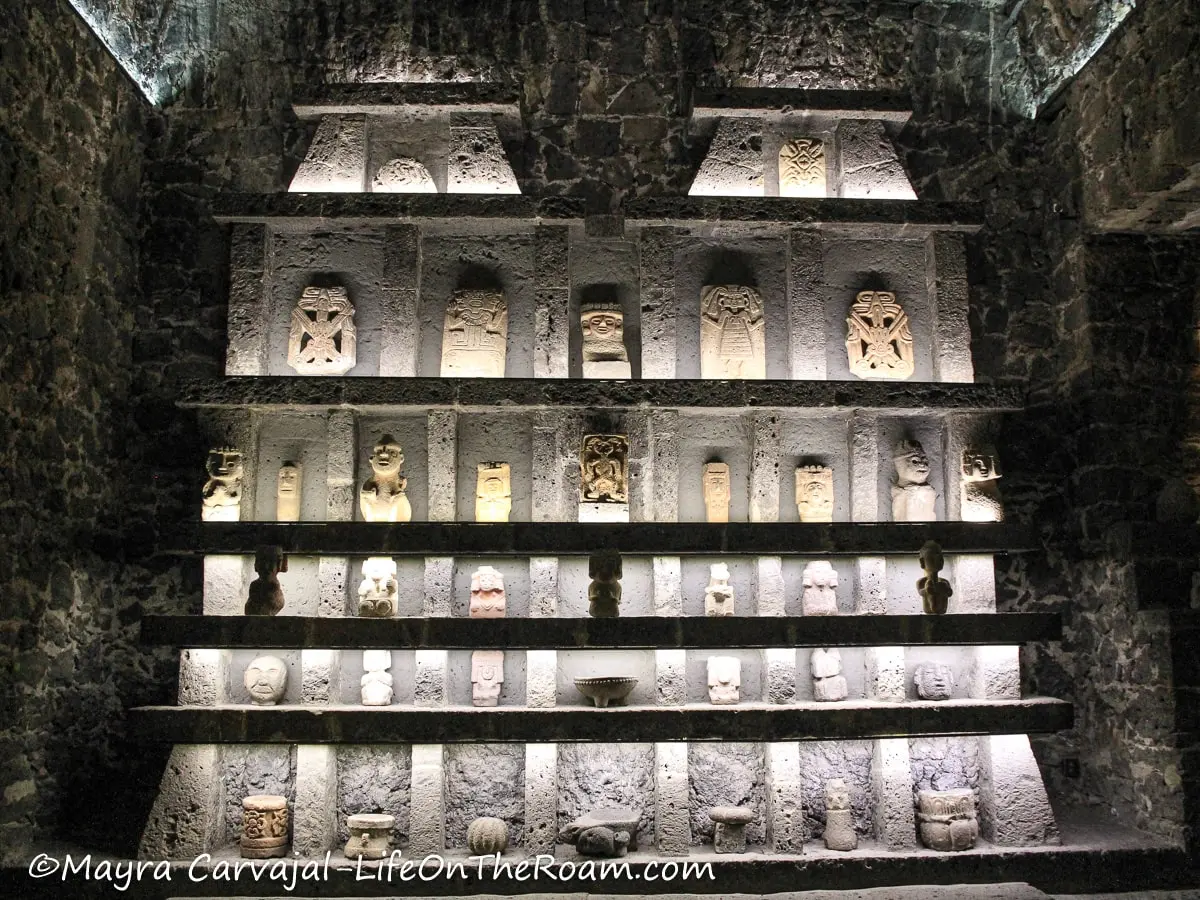
His favourite ancient god? Xochipilli, the god of art and love and prince of flowers. He’s all over the place. He not only inspired Diego, but also other artists such as the sculptor that created Xochipilli’s fountain in Chapultepec Park.
In addition to this archaeological and architectural treasure, you’ll find sketches in charcoal for some of Diego Rivera’s murals, including the one that caused a rift between the artist and Rockefeller. Paying attention to the guiding lines in his sketches is like attending a masterclass in composition.
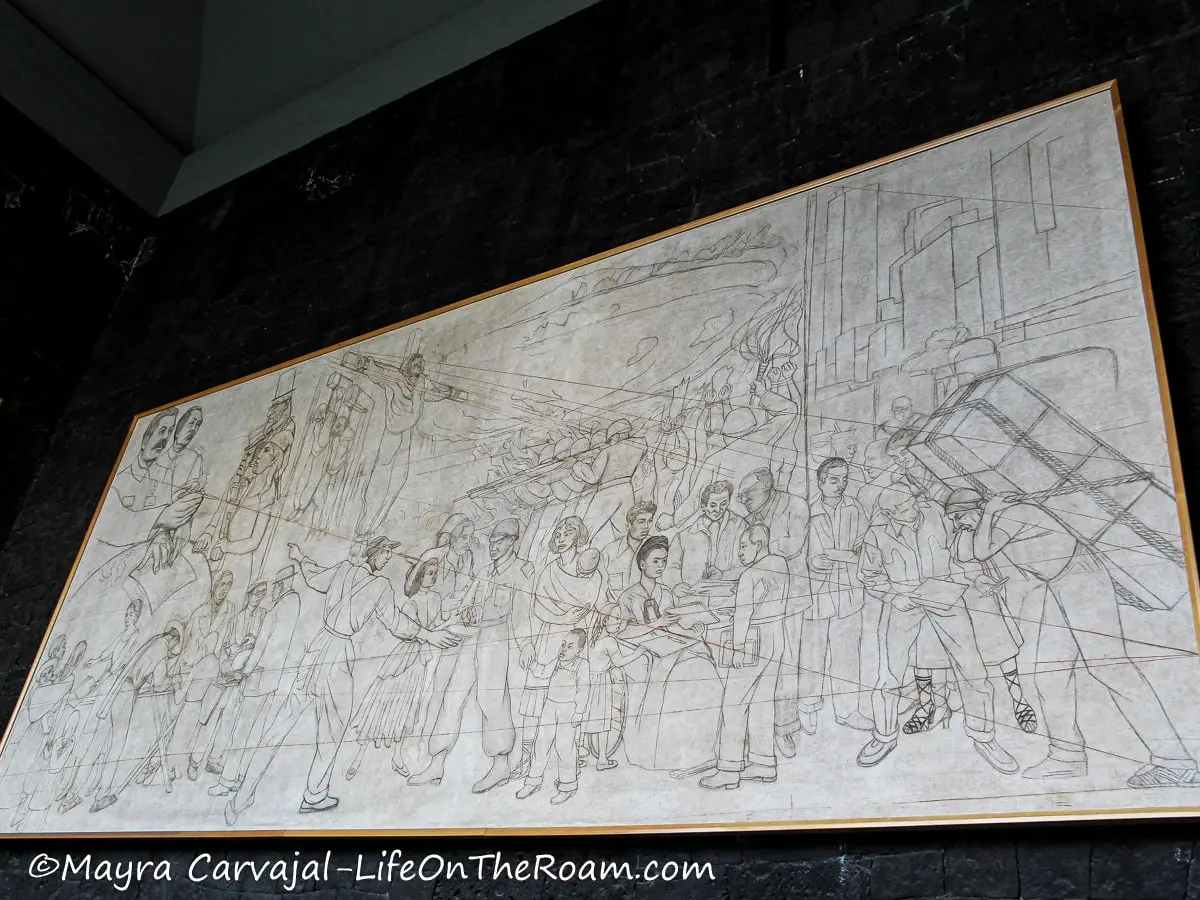
The cherry on top is the amazing view of the Iztaccihuatl volcano in the distance, resembling the profile of a dormant woman.
How to Get to Anahuacalli Museum
Although Anahuacalli is in Coyoacan, it’s a little bit out of Coyoacan’s centre (but not that much).
We took the subway (Line 2 (Blue)) to the Tasqueña Station (southbound) and from there we hopped on the Tren Ligero (a tram) and got off at the Xotepingo stop. From there we walked about 15 minutes along Museo Street.
Anahuacalli Museum
Museo 150, San Pablo Tepetlapa; Open Tue.to Sun.: 11AM-5:30PM. General admission: MXN$100 (Admission to the Frida Kahlo museum includes admission to this museum)
Check Out the Murals in the UNAM (National Autonomous University of Mexico)
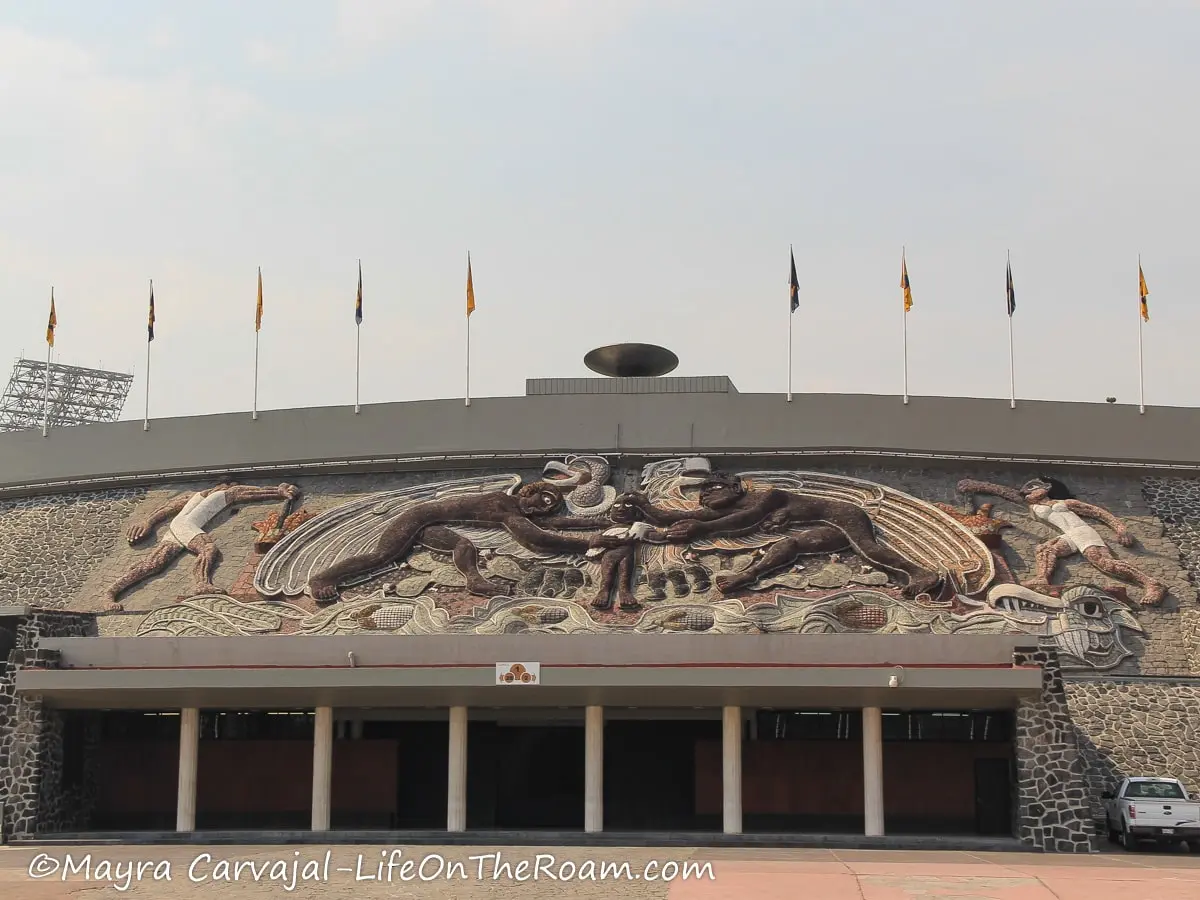
The Central University City Campus of the UNAM is a jewel of 20th-century modernist architecture.
The integration of Mexico’s indigenous culture elements in the artwork, the buildings, and the landscaping, earned the campus a spot in the UNESCO World Heritage Site list.
One of the most famous buildings not only in the UNAM but in Mexico City is the UNAM Central Library. Adhering to the principles of functionalism, Juan O’Gorman had in mind a big, simple rectangular box for the library, which was completed around 1950.
But he also had in mind that it would be an iconic building on campus, and the flat walls couldn’t be a better canvas for his idea: a 4,000 sq.mt (43,055 sq.ft) mosaic made with colour stones (nope, that’s not paint, it’s stone).
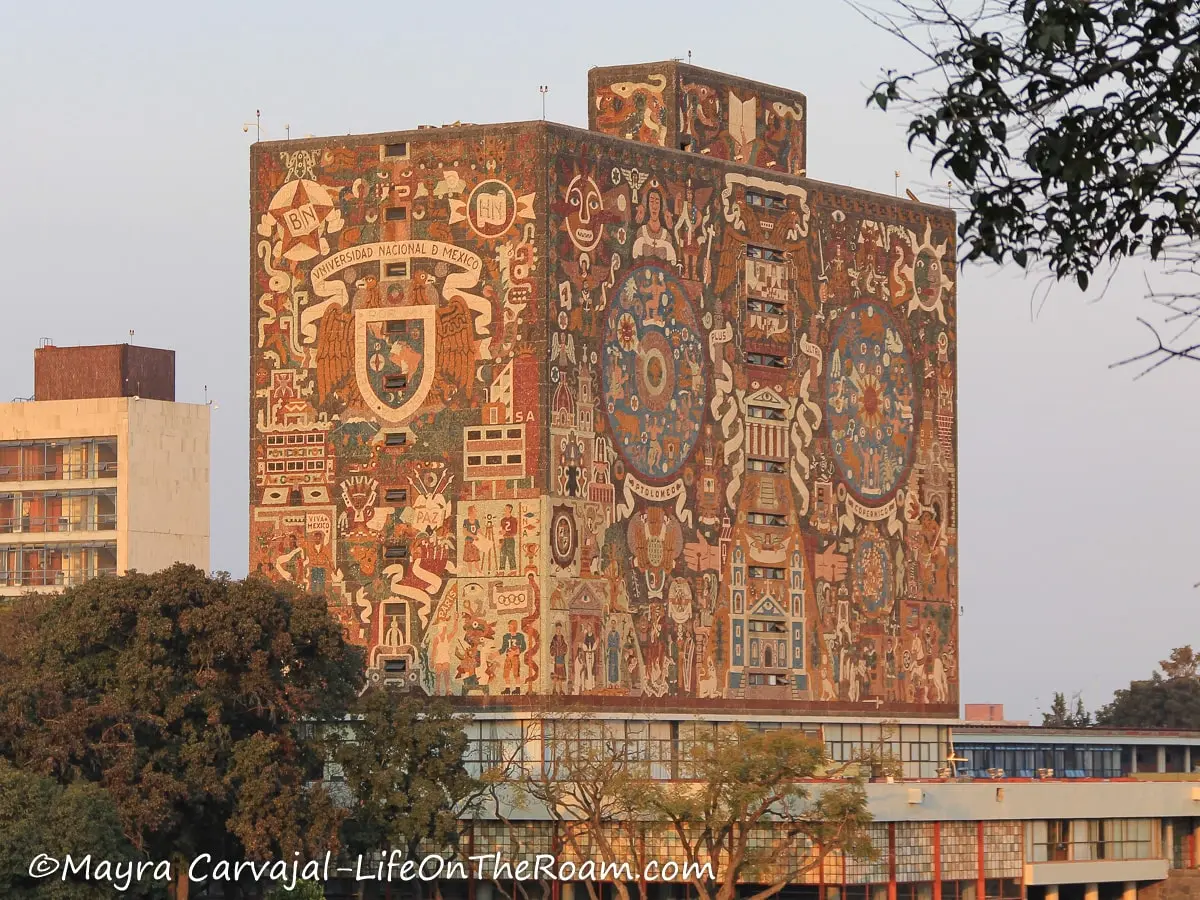
On the narrower wall shown in the picture you can read “Universidad Nacional D Mexico” above the seal created in 1921. The mural on the wider wall is titled “The Colonial Past”, representing the Spanish worldview with the heaven/hell duality, and the indigenous worldview.
If you’re a fan of Diego Rivera’s work, the Olympic Stadium mural -titled “La Universidad, La Familia y El Deporte en México” (The University, the Family and the Sport in Mexico”)- is a must-see.
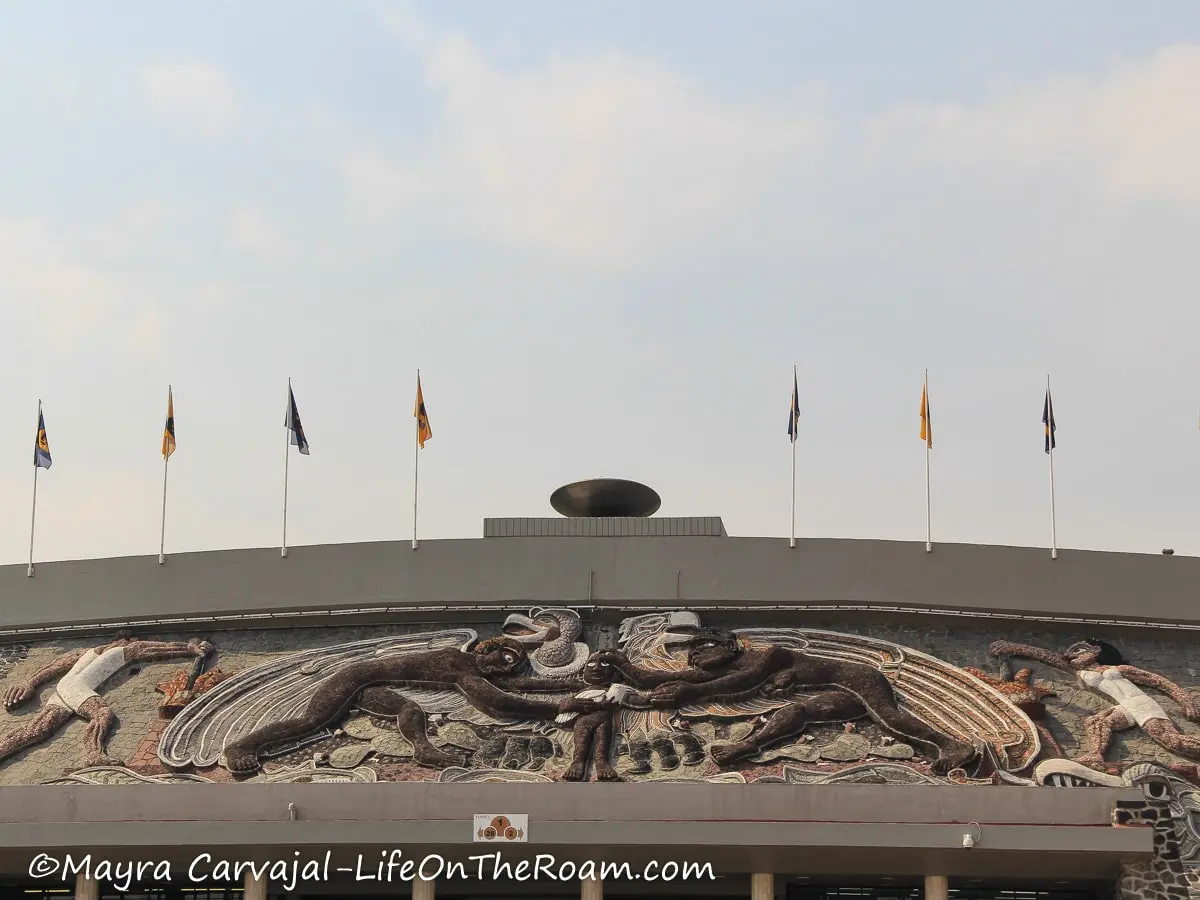
Unfortunately, Diego died before the completion of the mural.
Closest subway station: Copilco (Line 3 (Olive green))
To see as much as possible in one day you can book a private tour around Coyoacan including the entrance to the Frida Kahlo Museum, Anahuacalli, a stop at the UNAM Central Library, and a ride in the canals of Xochimilco.
Book this tour, with a rating of 4.8/5 based on more than 310 reviews.
Watch a Movie or Take a Break at the Cineteca Nacional
This is your place if you’re into artsy, independent movies from around the world, with tickets at very reasonable prices.
Or check out the cool architecture while you pause to have a bite to eat at one of the onsite cafés.
The Cineteca also has a courtyard with an outdoor theatre where you can watch movies for free.
Cineteca Nacional
Av. Mexico Coyoacan 389; Closest subway station: Coyoacán.
See Mexico’s Largest Plant Collection at the UNAM Botanical Garden
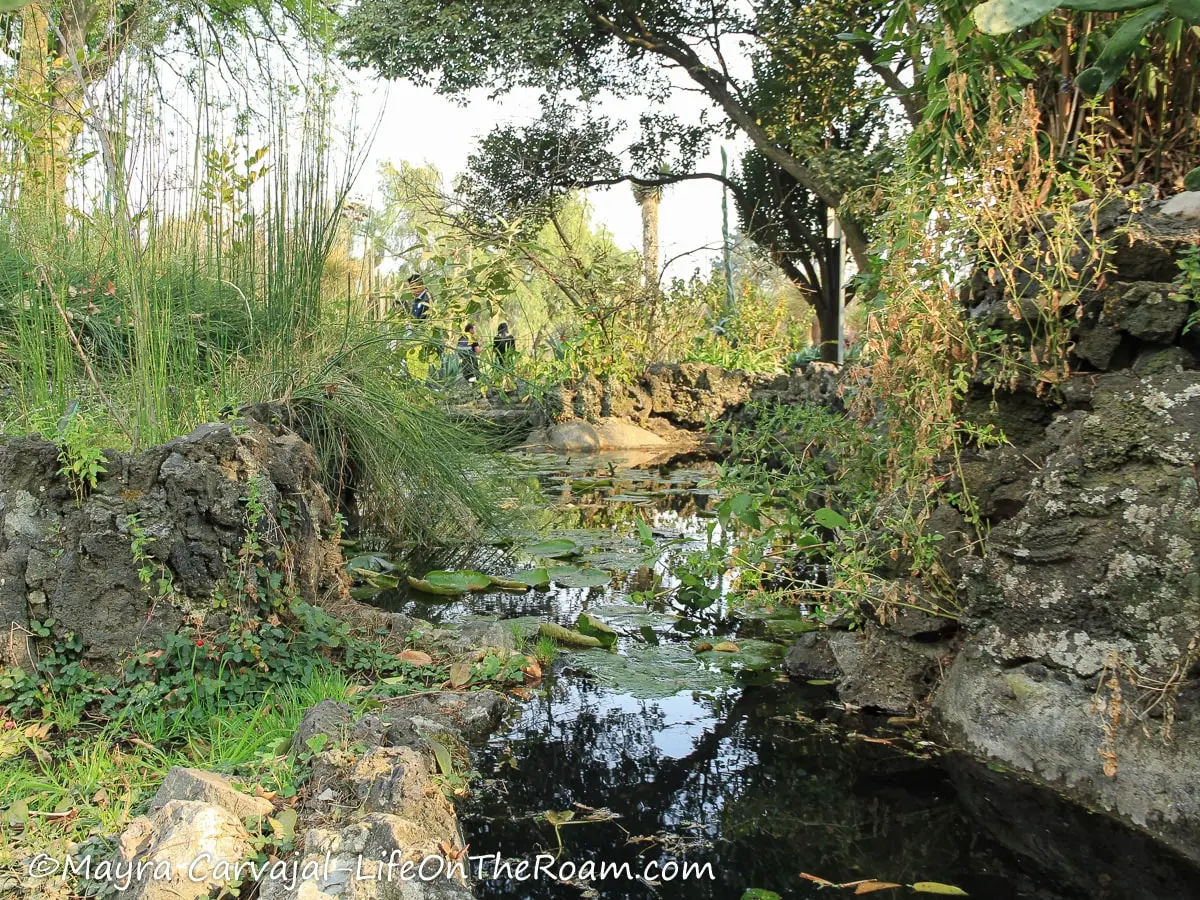
This Botanical Garden, run by the Institute of Biology of the UNAM (National Autonomous University of Mexico), is the second oldest botanical garden in Mexico and it focuses on the preservation of endangered species.
It hosts more than 200 species organized in 15 collections including cacti and lookalikes, medicinal plants, and a greenhouse with tropical plants and orchids.
Meander along volcanic rock pathways bordering ponds with aquatic plants and small cascades while delighting in the curious spiky shapes and colours of a desert environment. It’s also a great spot for birdwatching.
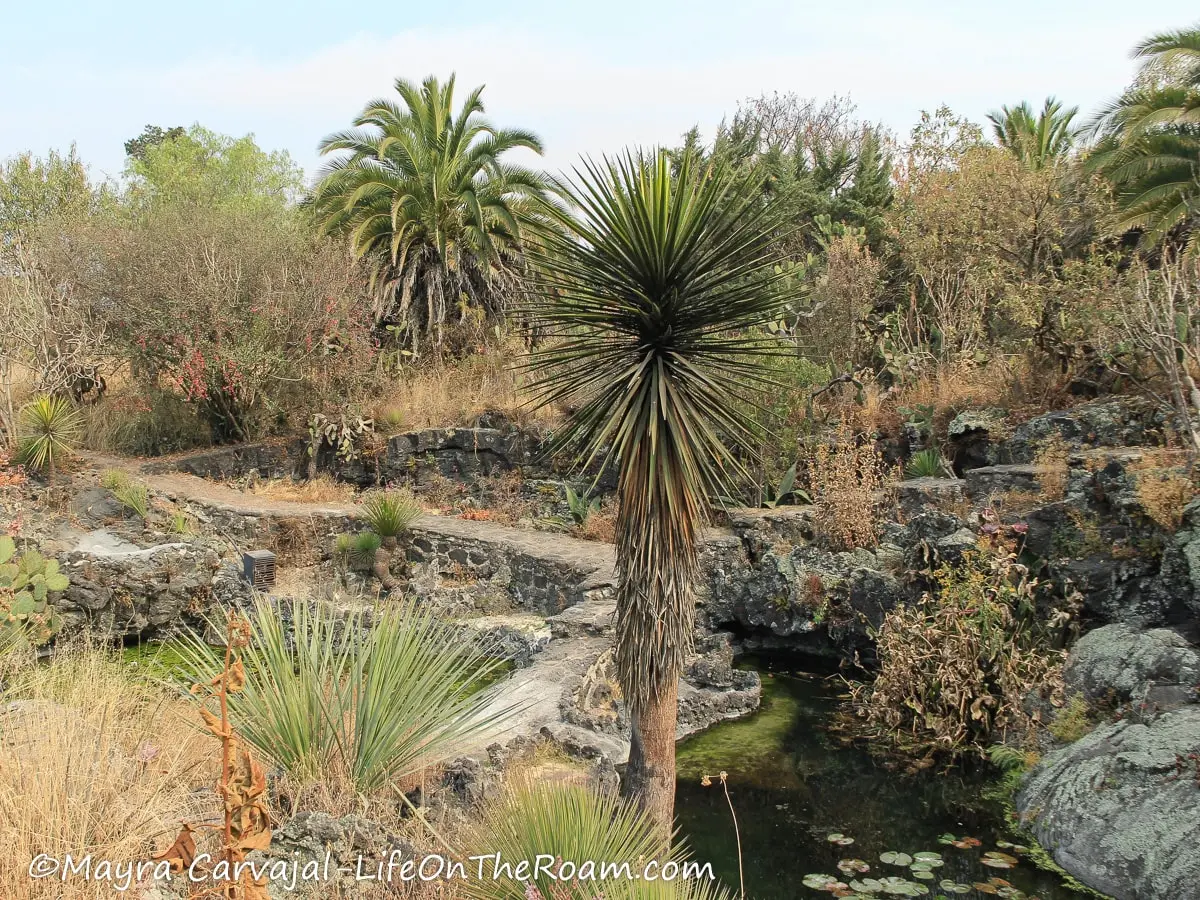
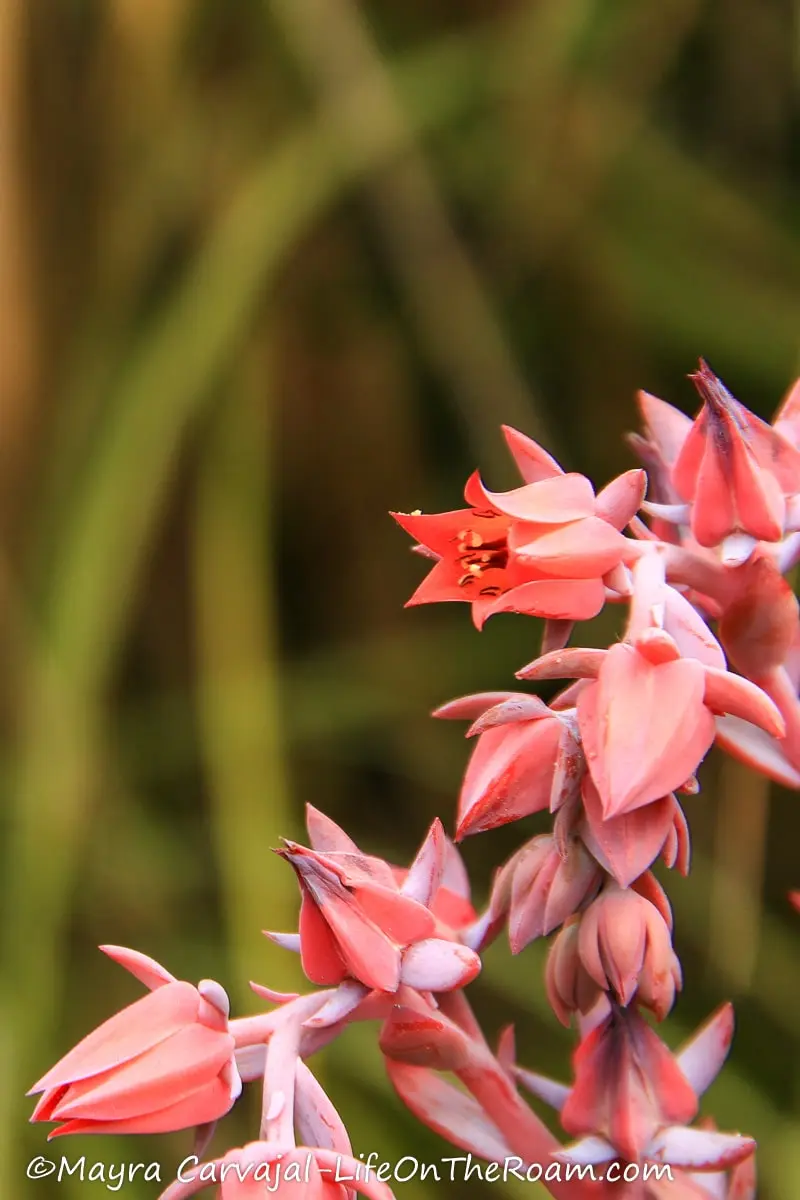
Enter the tropical garden and feel like you’re in a rainforest with palm trees and walls of monsteras, or visit the arboretum to walk under the shade of different species of trees.
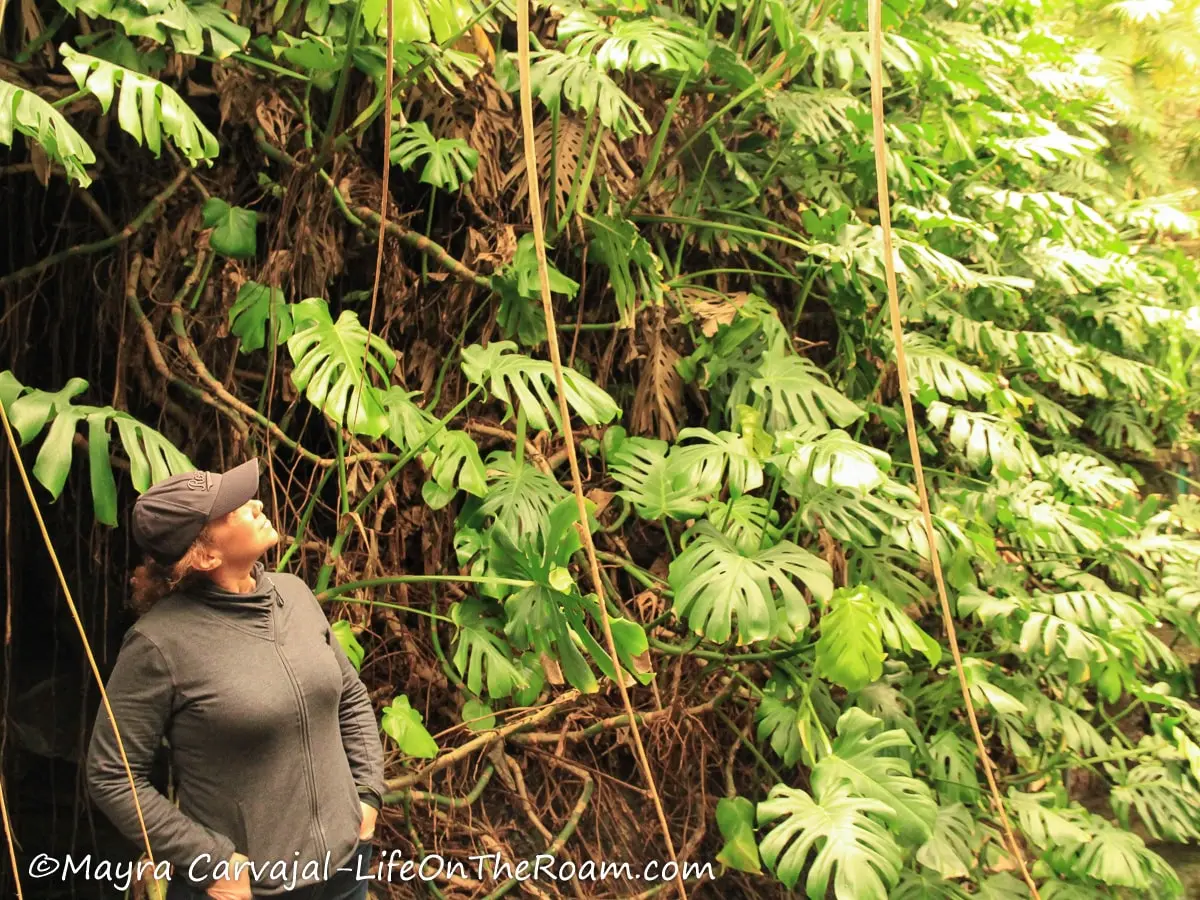
How to Get to the UNAM Botanical Garden
From the Insurgentes Sur subway station (Line 12 (Beige)) walk one block north to the Felix Cuevas Metrobus stop where you’ll hop on Metrobus Line 1 (Red), heading south towards El Caminero.
This bus runs along Av. Insurgentes Sur. You’ll get off at the Ciudad Universitaria stop and from there it’s a 0.8 miles (1.3 kilometres) uphill walk to the garden. Or take an Uber.
Cto. Zona Deportiva 53, Ciudad Universitaria; Open Mon. to Fri.: 9AM-4PM (varies per season)
Go Back in Time at the Cuicuilco Archaeological Site and Site Museum
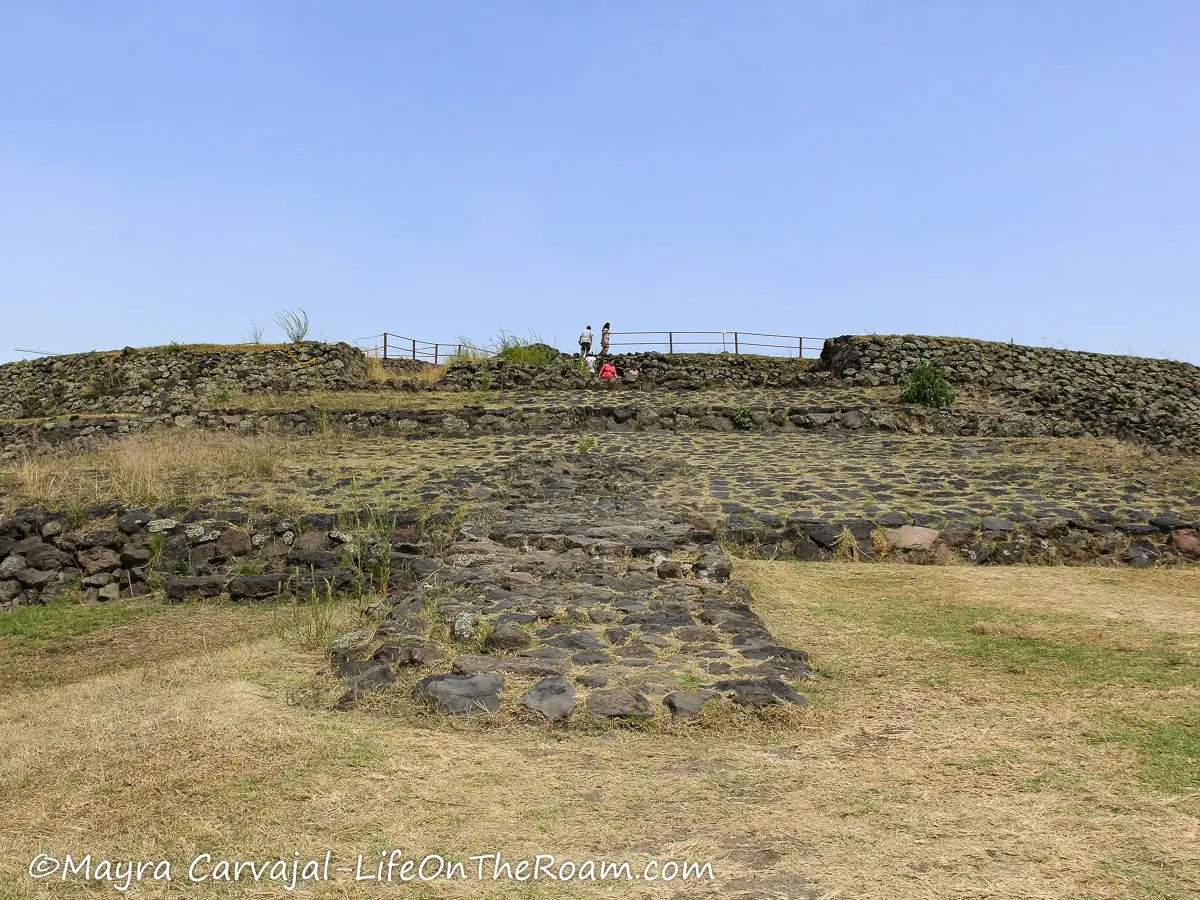
Cuicuilco means “A place to sing and dance”. With abundant crops that allowed them to build a thriving city and to be part of the commercial trade, I would be singing and dancing too.
The Cuicuilco Archaeological Site is on the other side of the highway that marks the border of Coyoacan, but if you have time it’s worth walking some extra steps to check out these ancient ruins in Mexico City.
Cuicuilco was a major civic and religious centre (the first in the region) formed in 1000 B.C., reaching its peak in 100 B.C. Of the many buildings that populated Cuicuilco only few remain, along with some traces of the hydraulic system.
If you expect to see many monumental pyramids, you may be disappointed. But if you’re a history and archaeology buff, you’ll appreciate this ancient site.
The biggest structure in Cuicuilco is a humongous circular platform aptly named “El Gran Basamento Circular”, with a 110-metre diameter (360 feet) and a height of 25 metres (82 feet) that was reached over several construction periods, between 800 and 150 B.C..
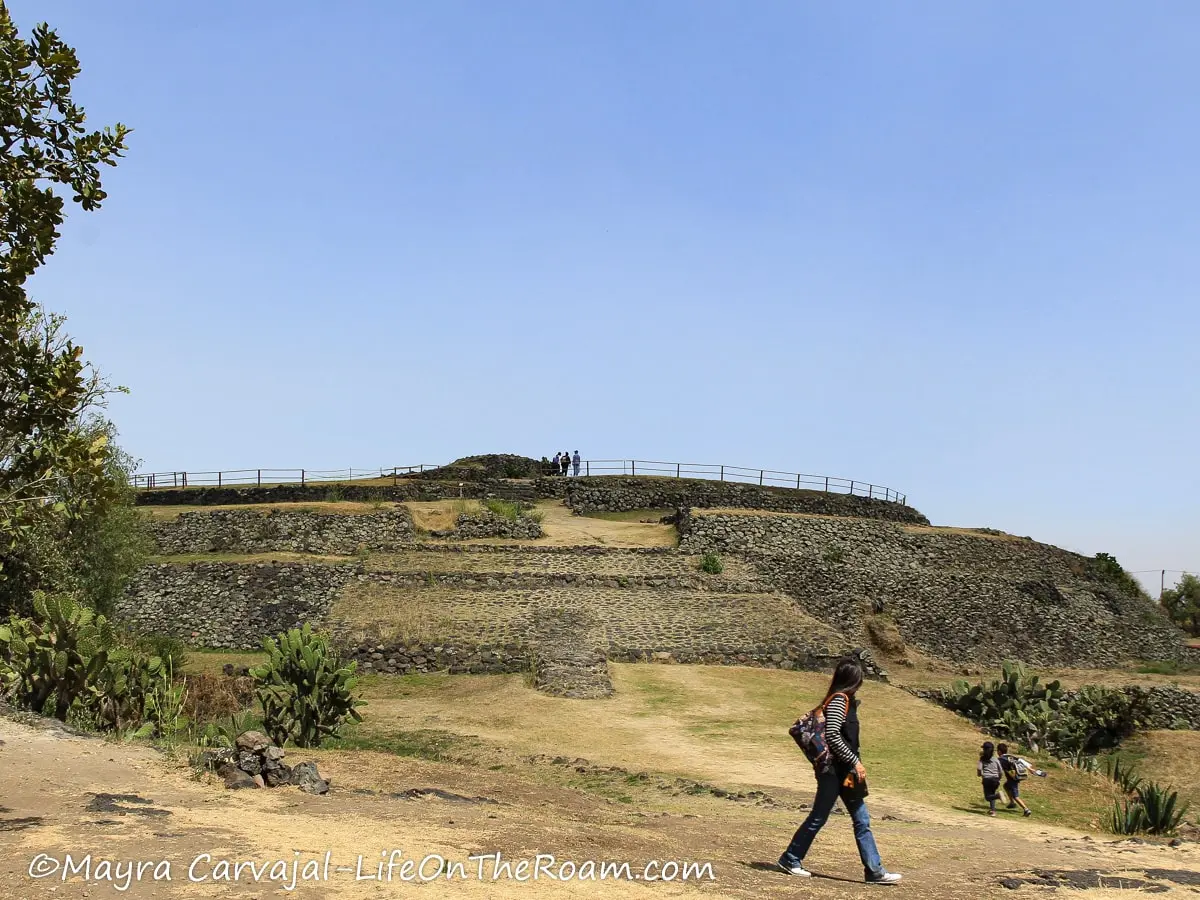
Archaeologists think that people gathered at the top of this big pile of volcanic rocks to perform religious ceremonies. You can still see some remaining altars, strategically placed according to the sun trajectory.
On the side you’ll find a small structure named “The Kiva”, where you can see traces of drawings with red paint (from an iron oxide) during 150 B.C. Historians know that rites took place here, but so far no one knows what they were about.
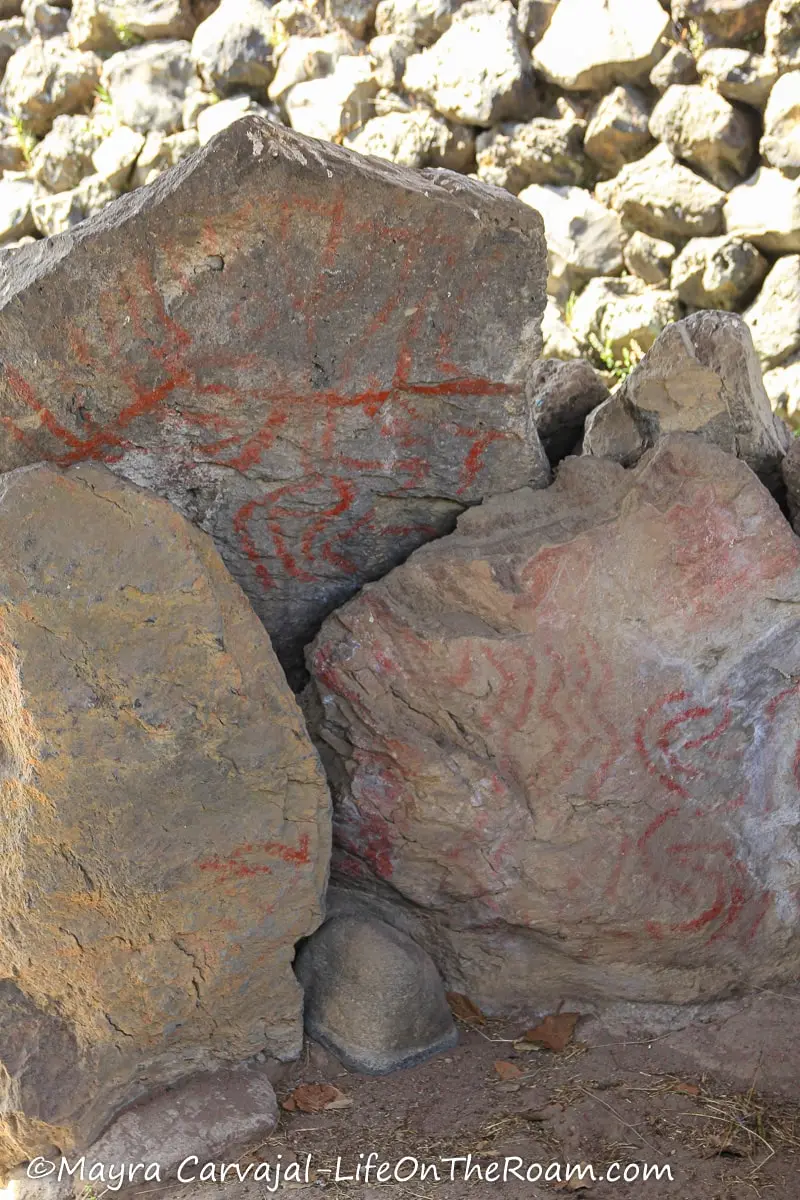
Other buildings hid burials with offerings next to skeletons, such as Structure E-1.
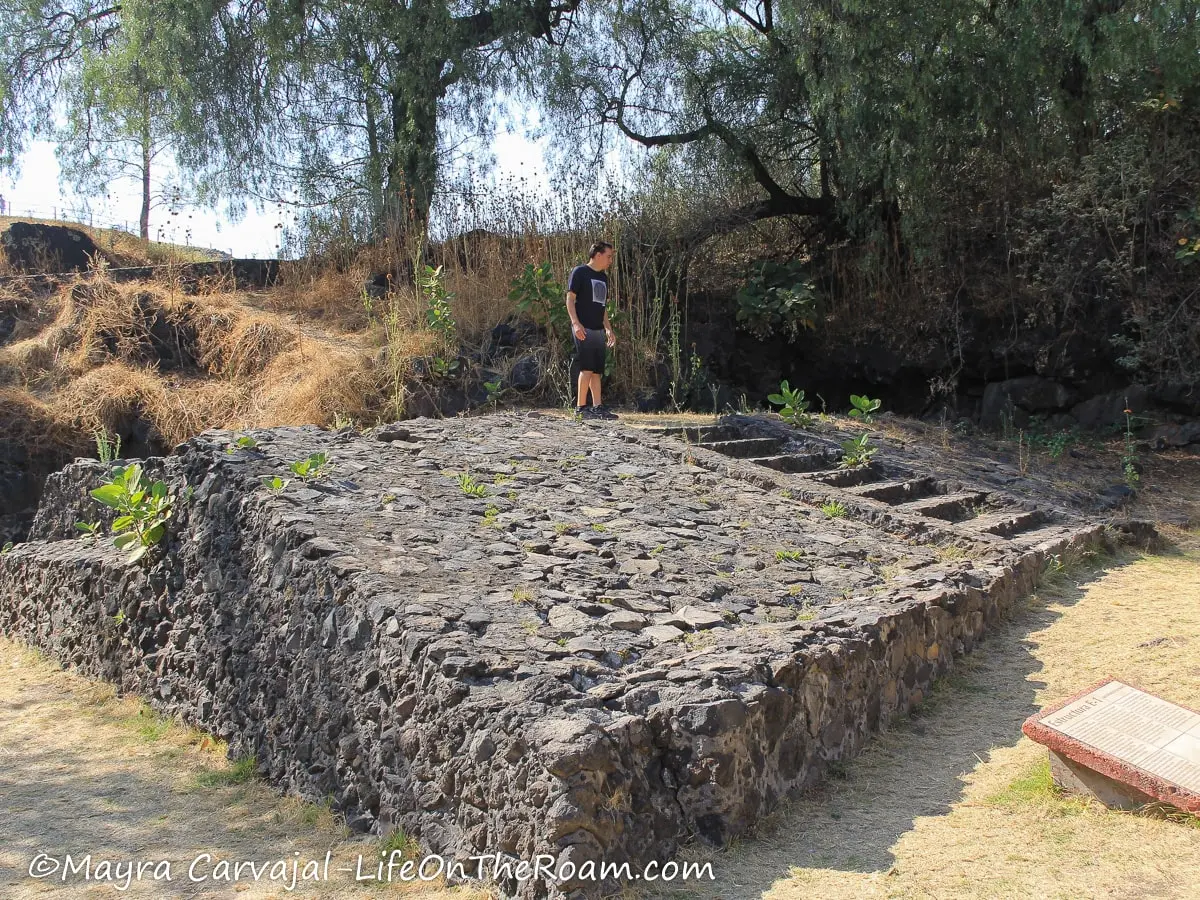
In a corner they found pottery, and a necklace and figurines made of green stone.
You can see some of the artifacts recovered during site excavations and some tools at the site museum, where you can also learn about life in Cuicuilco. Many pieces follow the Teotihuacan style, and many were decorative items that reached Cuiculco via the trade route, such as jade and seashells.
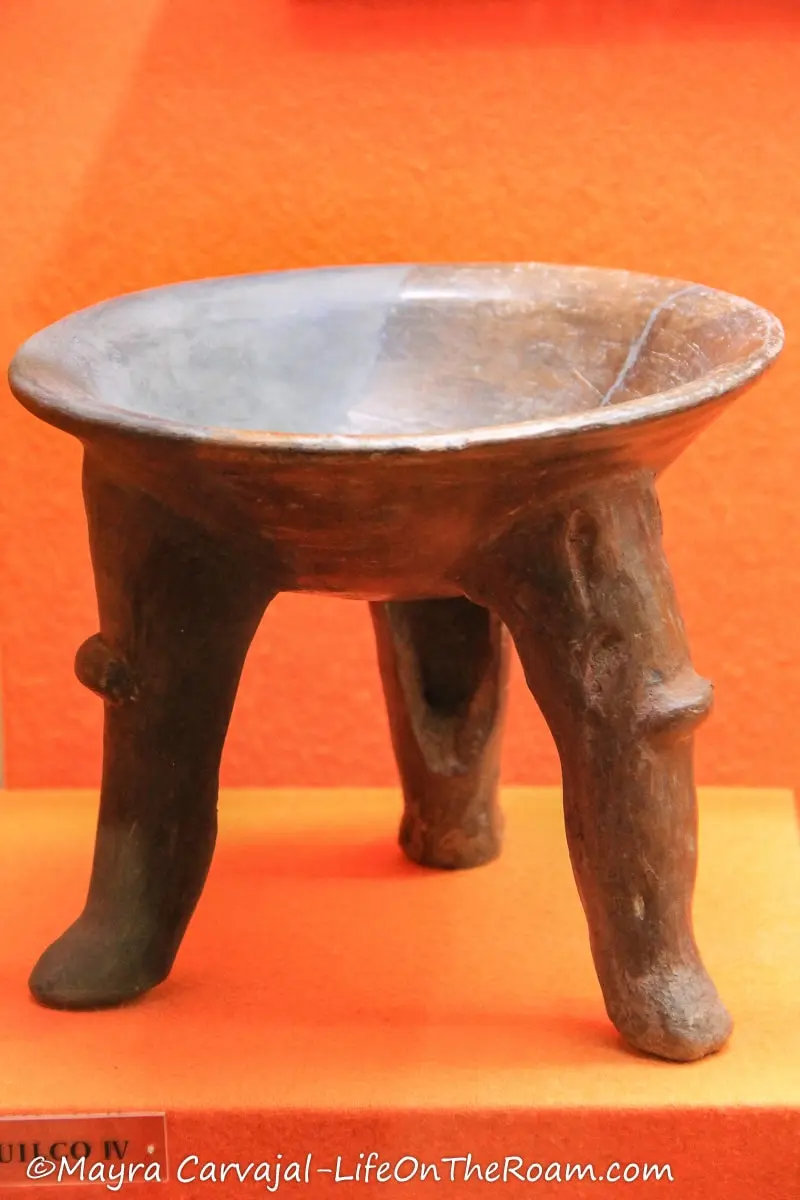
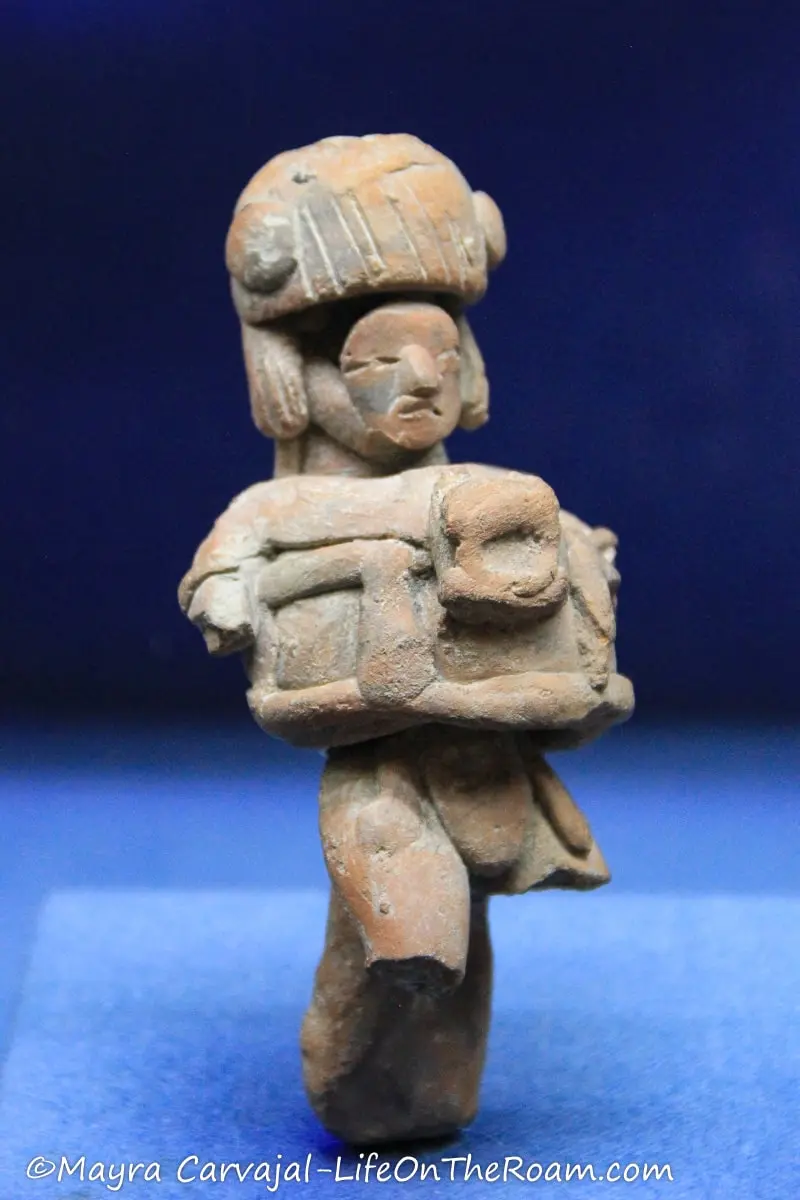
The eruption of volcano Xitle, around 1300 A.D., marked the end of Cuicuilco after it covered the city with a thick layer of lava which you can still see when you walk around the site among an arid landscape of cacti.
How to Get to Cuicuilco Archaeological Zone
From the Insurgentes Sur subway station (Line 12 (Beige)) walk one block north to the Felix Cuevas Metrobus stop where you’ll hop on Metrobus Line 1 (Red), heading south towards El Caminero.
This bus runs along Av. Insurgentes Sur. You’ll get off at the Villa Olimpica stop, which is a few metres south of the site.
See Diego Rivera’s Mural at Teatro de Los Insurgentes
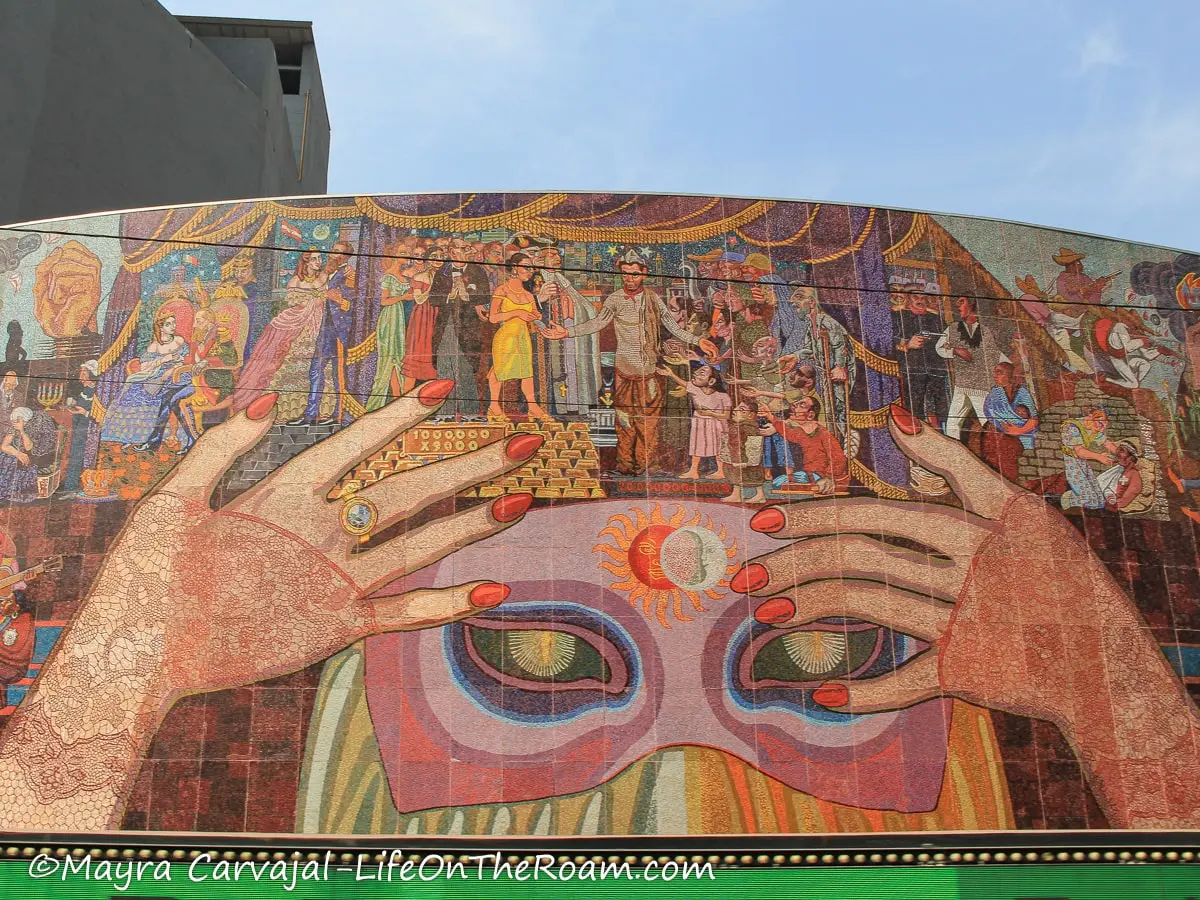
This is another one for fans of Rivera’s artwork.
The mural at Teatro de Los Insurgentes depicts passages of Mexico’s history, including symbols of the pre-Hispanic era, the Mexican Revolution, and the Second Empire.
In the centre, right above the masked lady who just had her manicure done, you’ll see a scene with Cantinflas, a famous Mexican comedian. He’s taking money from the rich to give it to the poor. Social and economic disparity is a constant on Rivera’s murals, a reflection of his liking of the Marxist ideology.
You’ll also see famous characters in Mexico’s history, such as president Benito Juárez and Maximilian of Habsburg with his wife Charlotte of Belgium (check out the Austrian flag left to the central scene). Maximilian was the second emperor of Mexico whose life ended in Queretaro City.
Teatro de Los Insurgentes is just outside Coyoacan (a 20-minute walk), it’s worth seeing the mural if you’re around. It’s conveniently located in front of a Metrobus stop that takes you to the south of the city.
Av. de Los Insurgentes Sur 1587, Benito Juárez; Closest subway stop: Barranca del Muerto (Line 7 (Orange))
Explore San Angel Neighbourhood
Bordering the northwest side of Coyoacan you’ll find the San Angel neighbourhood, with a thriving cultural and culinary scene. If you’re already on this side of the city and have time to explore further, head to San Angel to hang out in its lovely parks, squares, arts and crafts shops, and see even more of Diego and Frida’s life.
Where to Stay in Coyoacan
The best area to stay in Coyoacan is anywhere around the centre. It’s considered safe, close to many attractions and with a lively atmosphere.
Although it’s not the closest area to other tourist sites in Mexico City, it’s a great place to stay for a few days while you explore the south side of Mexico City.
Check out this hotel and guest house with excellent reviews:
Finca Coyoacan: located five blocks from the Frida Kahlo museum. The units at this guest house have a kitchenette, a dining area, and a flat-screen T.V. (some have AC). Shared spaces include a full kitchen, and a picnic area. Rating: 9.4 based on more than 200 reviews.
Agata Hotel Boutique & Spa: two blocks away from Plaza Hidalgo, the modern rooms of this hotel have AC, a flat-screen T.V. with satellite channels, and a small dining table. Breakfast and free airport shuttle included. Rating: 9.1 based on more than 210 reviews.
Is Coyoacan in Mexico City Safe?
Coyoacan is considered one of the safest neighbourhoods in Mexico City, especially around the centre area. As in every major city, always be aware of your surroundings. After dark avoid the areas located further south closer to Tlalpan and Xochimilco.
Is Coyoacan Part of Mexico City?
Yes, it is. Although Coyoacan was its own thing when it was founded in the 16th century (as we know it today because cities existed here before the arrival of the Spaniards), it was engulfed by the spiraling growth of Mexico City.
Coyoacan is now one of the biggest municipalities of Mexico City, located on the south side.
How Far Is Coyoacan from Mexico City?
From the Zócalo subway station in the Historic Centre to the Coyoacán subway station is an approximately 26-minute ride.
It’s the fastest way to travel in the city (followed by the Metrobus which has a dedicated lane), as traffic is insane in Mexico City. I don’t recommend renting a car here.
How to Get from Mexico City to Coyoacan?
It’s very easy to get to Coyoacan by public transit. Line 3 of the subway has several stops along the way that will drop you close to attractions: from the Coyoacan station down to the Copilco station.
Coyoacan is a fantastic destination in Mexico City for art and history lovers, but also has something for those who love walking around gardens and cobblestone streets. And a must-see is you admire Diego and Frida’s work.
YOU MAY ALSO WANT TO READ
BOOKING FLIGHTS AND ACCOMMODATIONS
Book your flight without losing your shirt
We check Momondo to find great deals to book our flights. Also, check Great Escape: it combines the listings from Expedia, Kiwi, Kayak, (and Skyscanner on the premium service) to find the best airfares.
To find a place to stay for less
Booking.com: this site combines everything under the sun. You’ll find hotels, apartments, B&B, hostels, rooms, etc., with all sort of filters to make your search a breeze.
Hotwire: the first site I check when we plan to stay at a hotel for a few nights. You can save anything from 20% to 60%. Use the search filter to find what you want and you’ll end up with three listings that match your criteria. You’ll know which one you’ll get after you book. If you can handle a little bit of uncertainty you can score big savings.
House Sitting: you take care of people’s pets and house for free while staying for free. It’s the closest thing to experiencing a place “like a local”. But it comes with responsibilities… Are you an animal lover? It may become your new way to travel.
To get travel insurance
SafetyWing: travel medical insurance that gives us peace of mind knowing that we’re covered in case of emergency. It’s convenient, affordable, and suitable for digital nomads who spend a long time outside their home country.
Check the full list of travel resources on my Resource Page for more options and savings
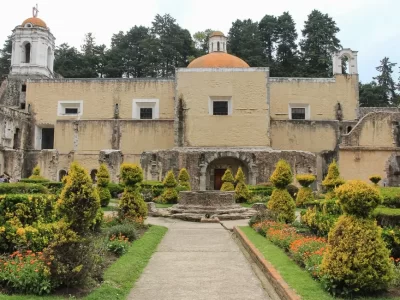
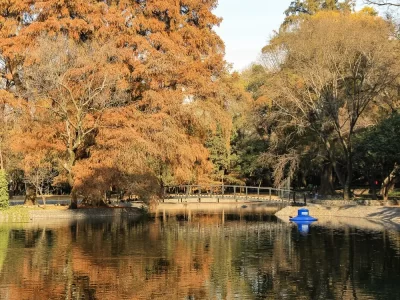
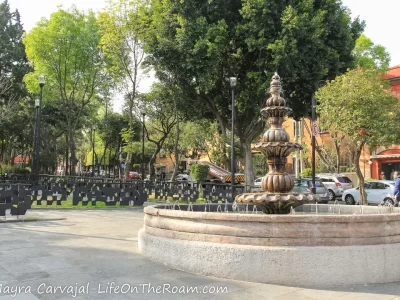
Wow this is an absolutely beautiful area, being a little out from the major city is so very appealing to us when we travel…and so many spaces to see as well love the museums and archaeological zones…thank you for such a thorough look around for inspirations….
Thanks for reading! Coyoacan is a wonderful alternative to stay in Mexico City.